1st of March, day 3 of our journey through Lithuania, day 6 of the Russian war against Ukraine. Yuliya and I kept looking at our smartphones, checking news sites, trying to keep in touch with our friends in Ukraine. The day started with a long walk through Jewish Kaunas. Then we drove on to Panevėžys via Jonava, Ukmergė, Šėta and Kėdainiai.
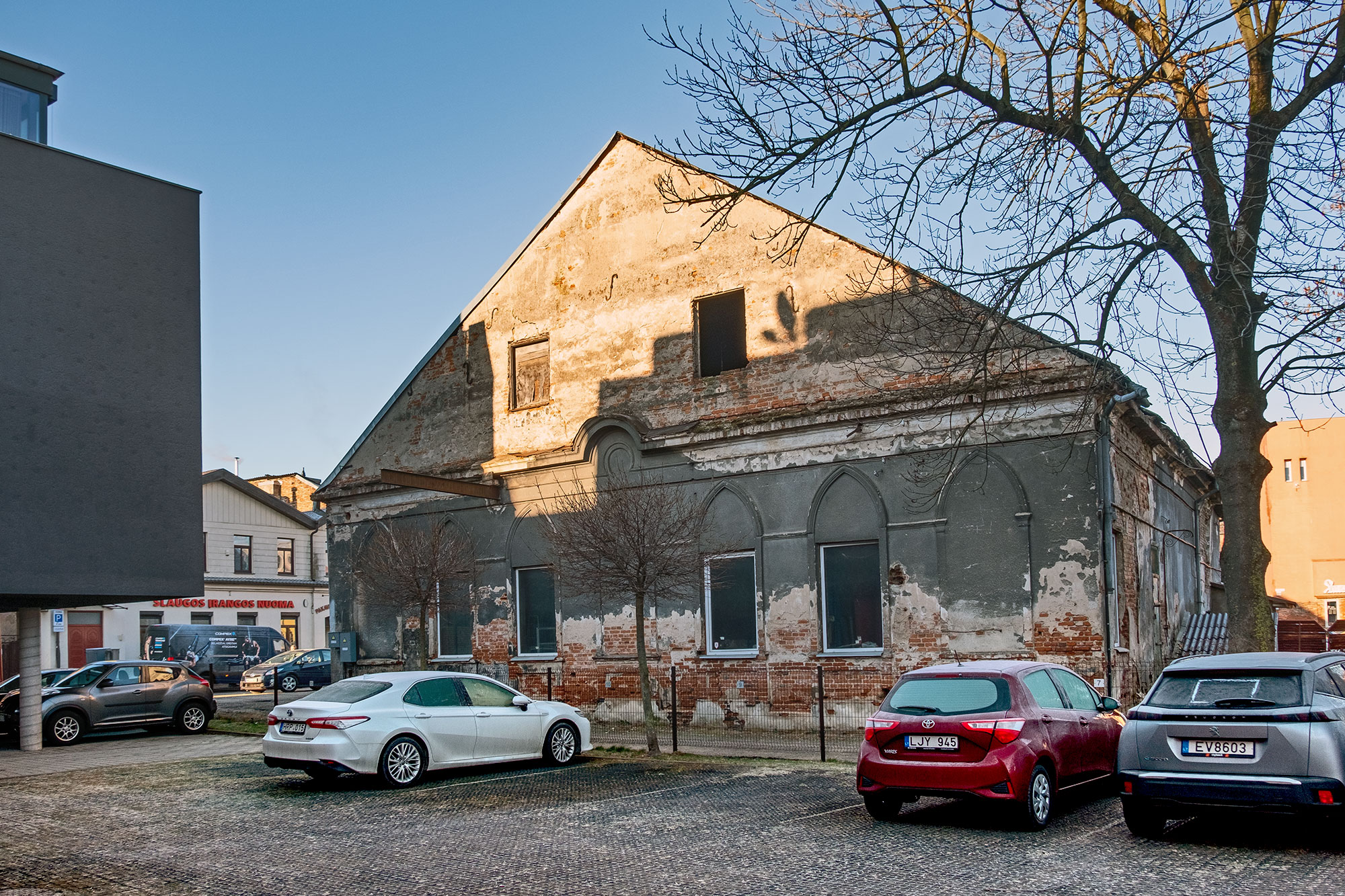
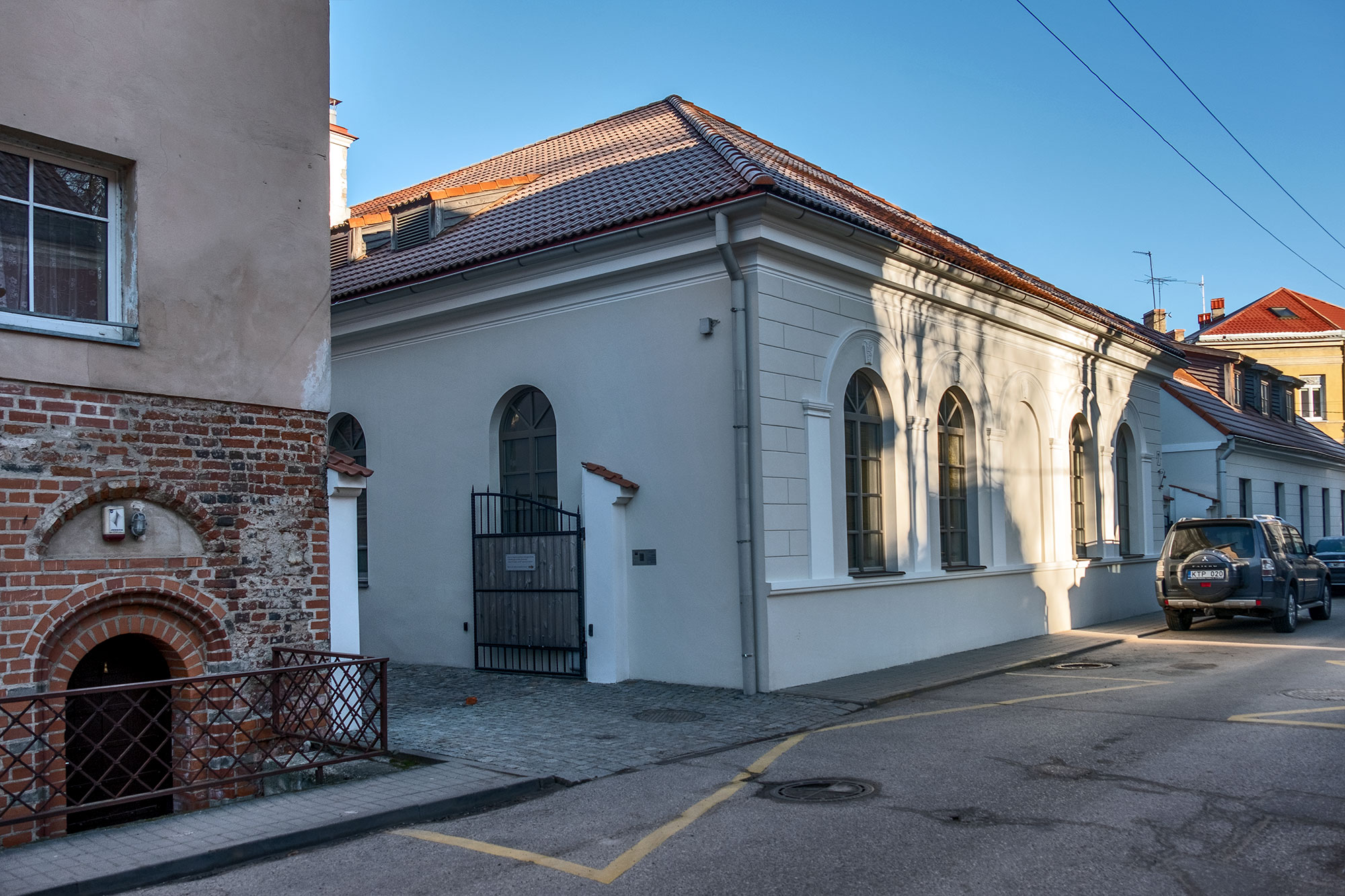
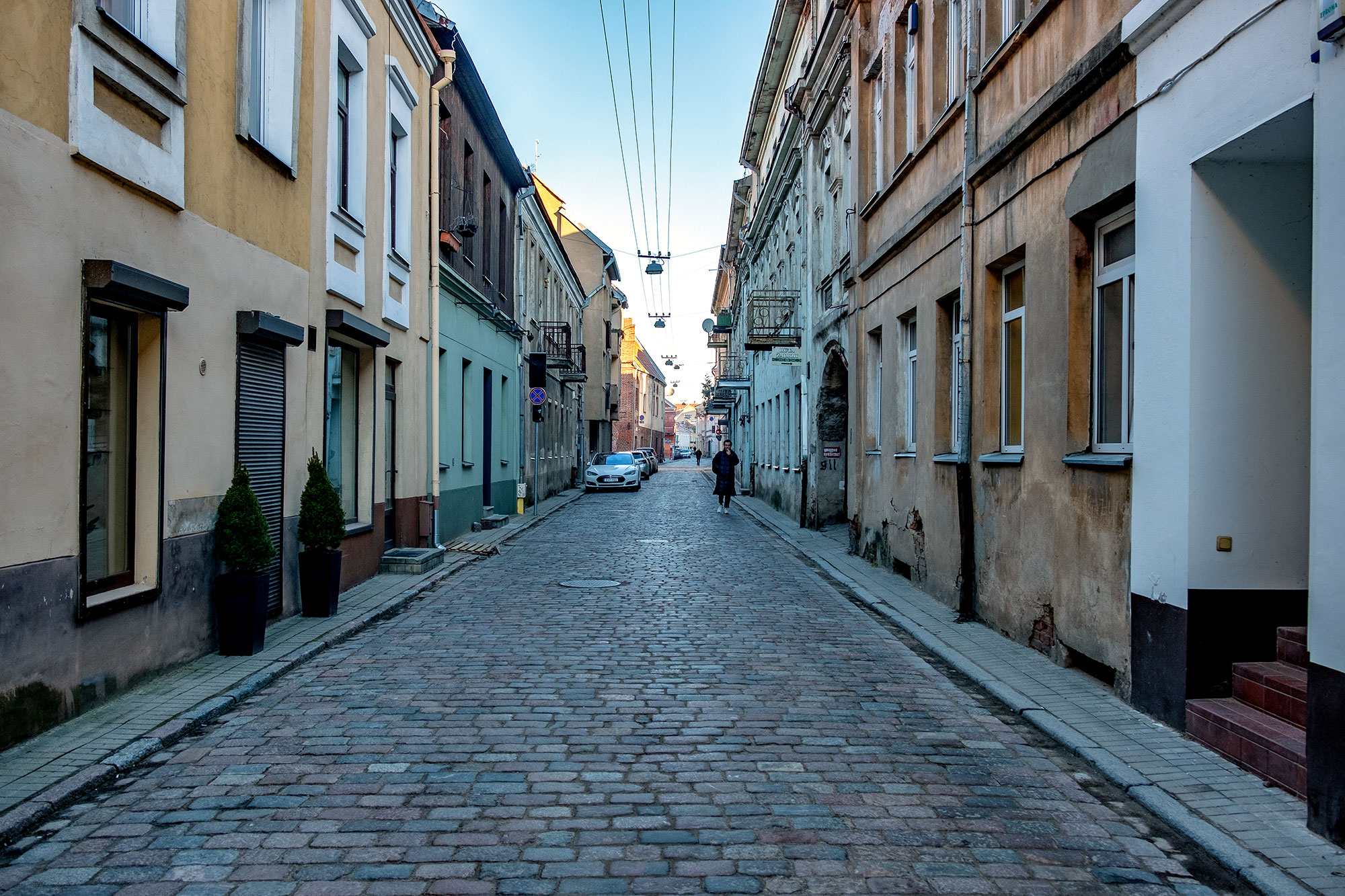
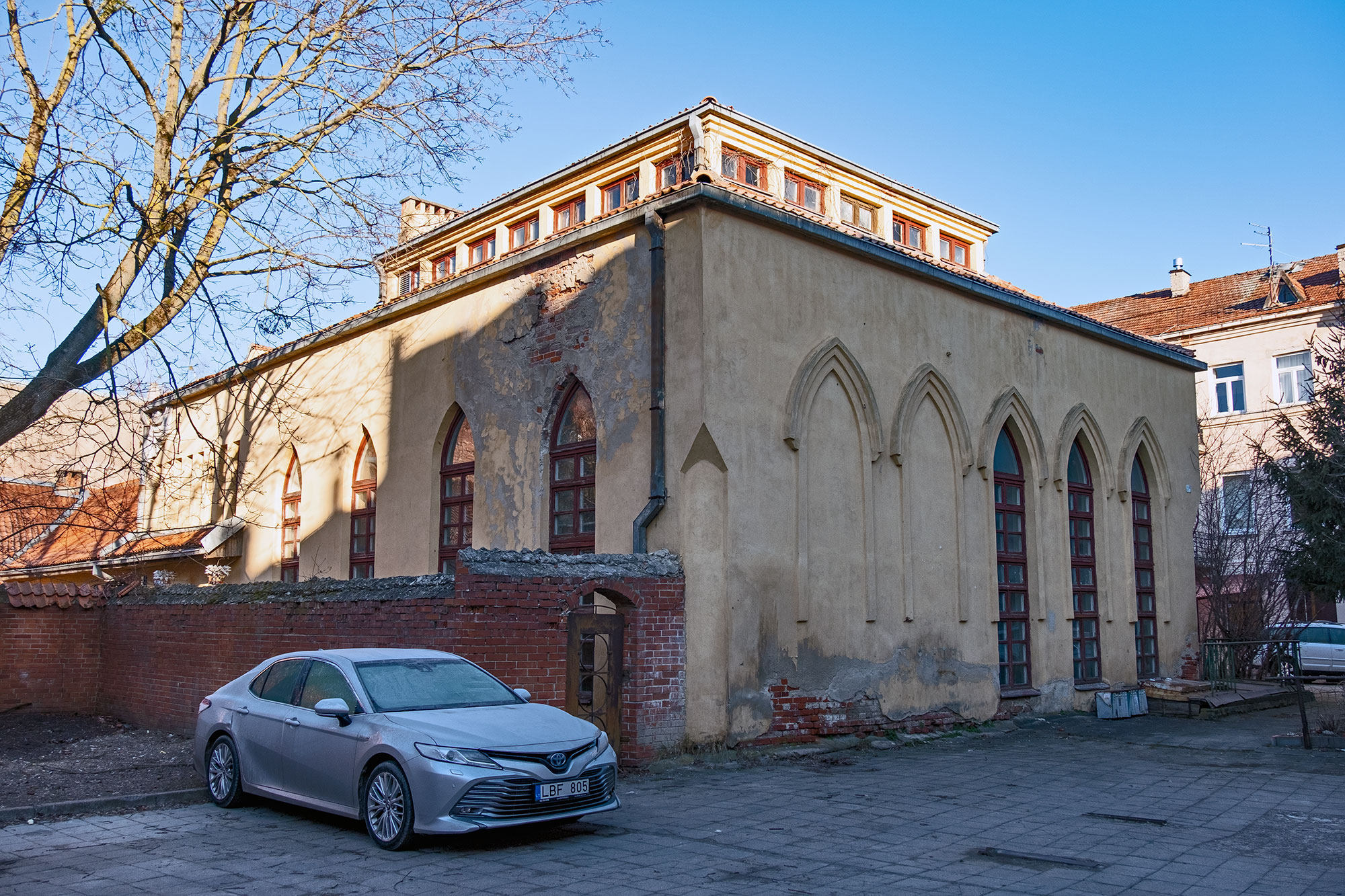
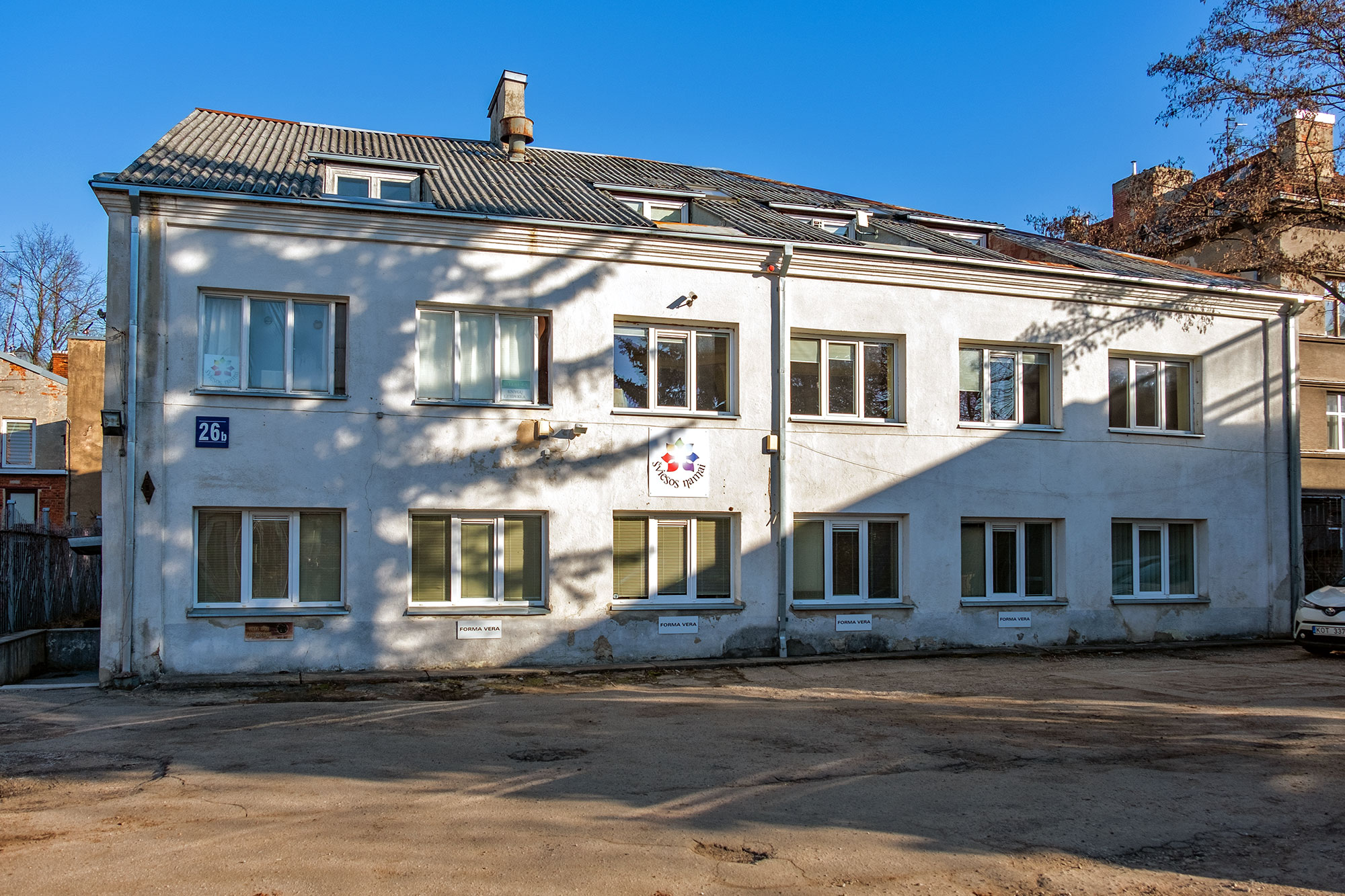
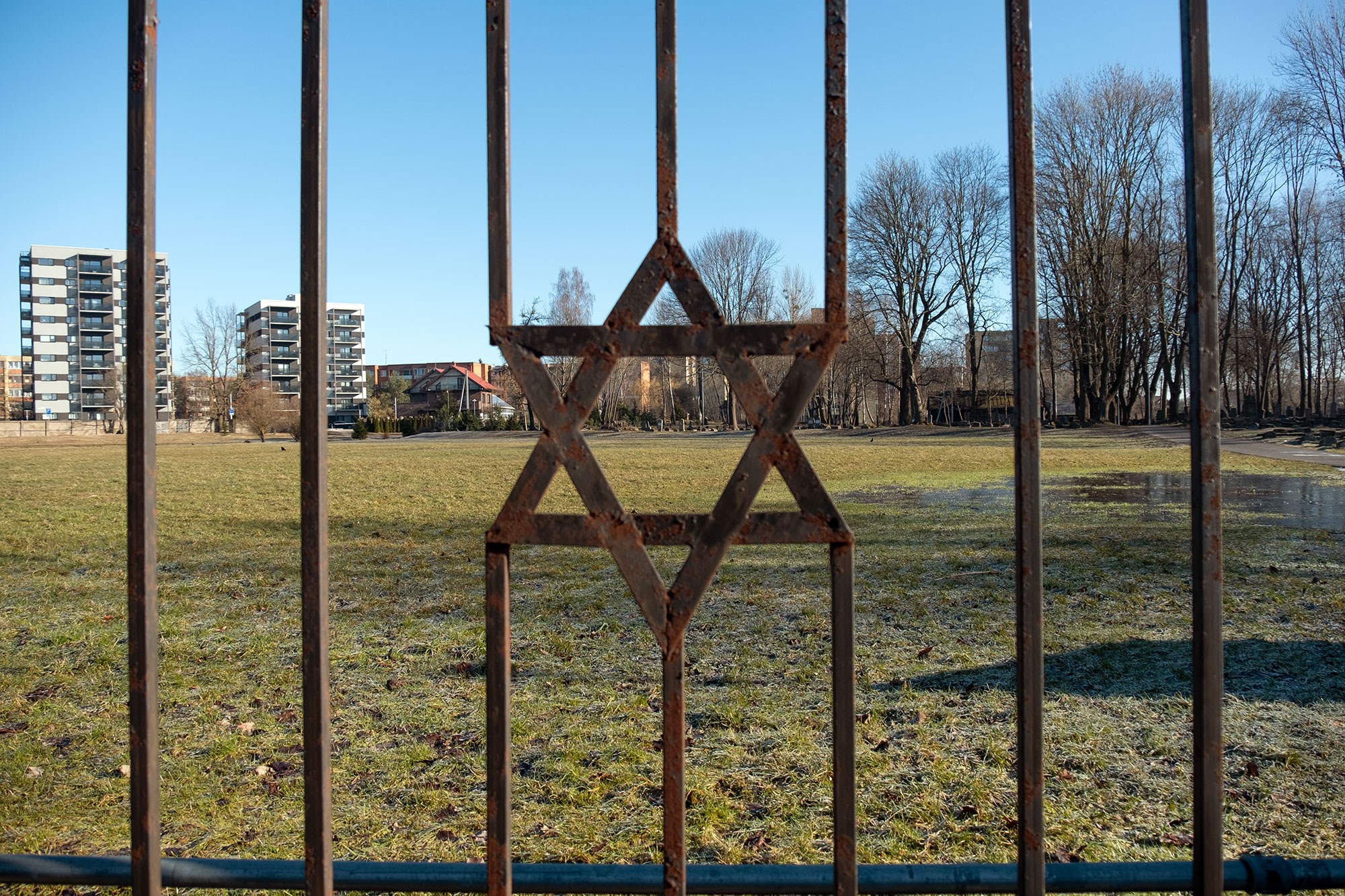
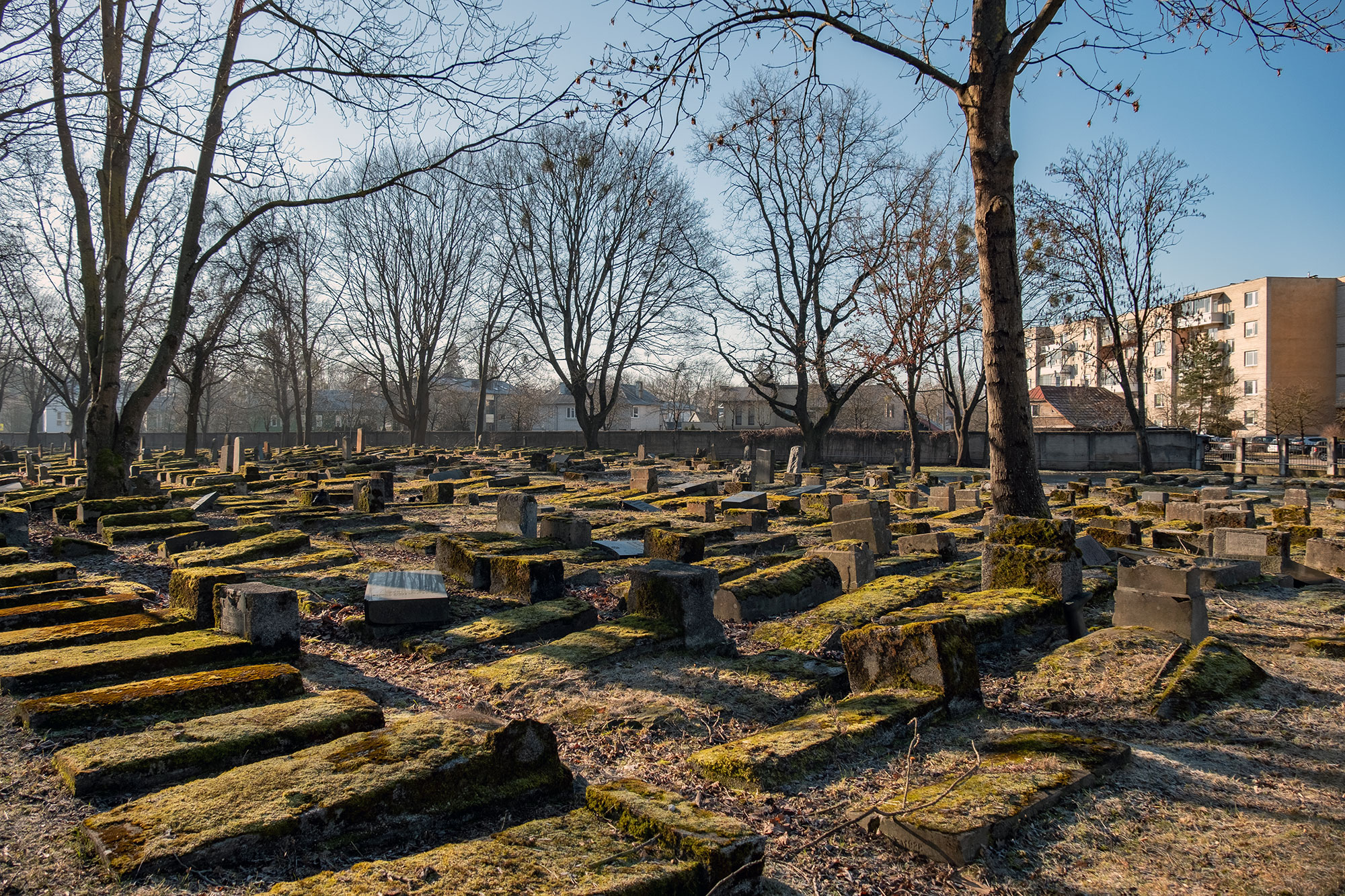
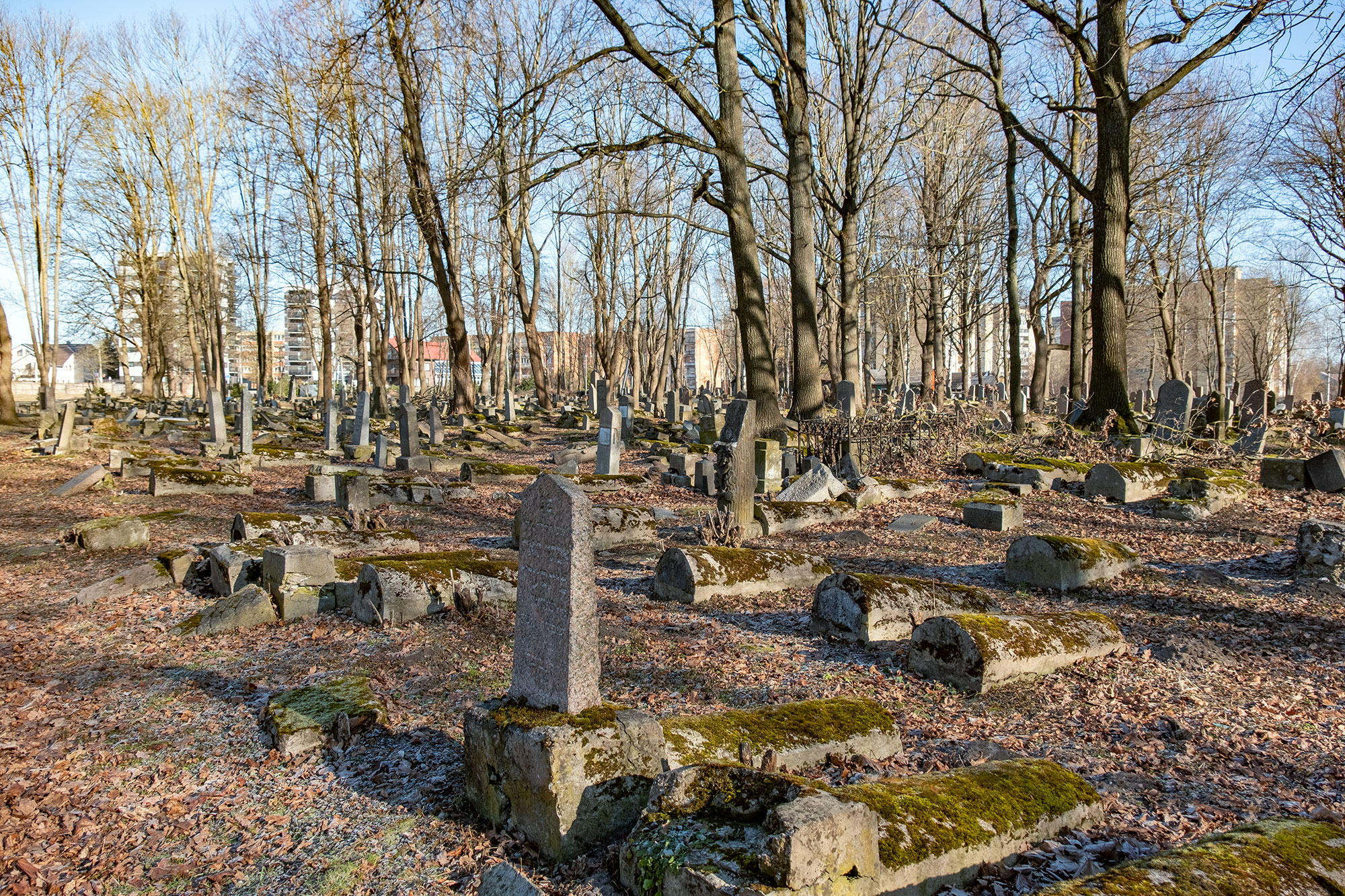
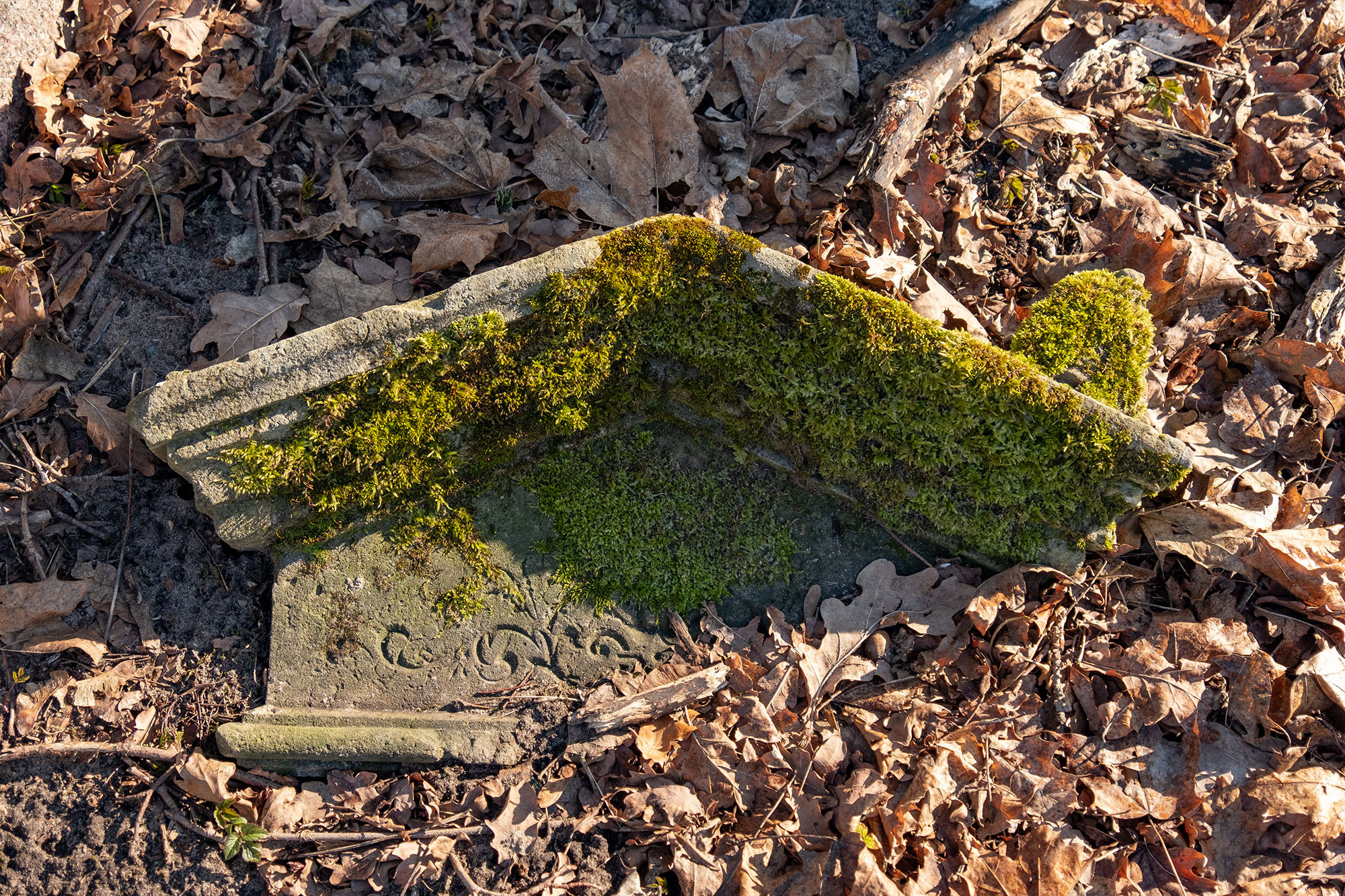
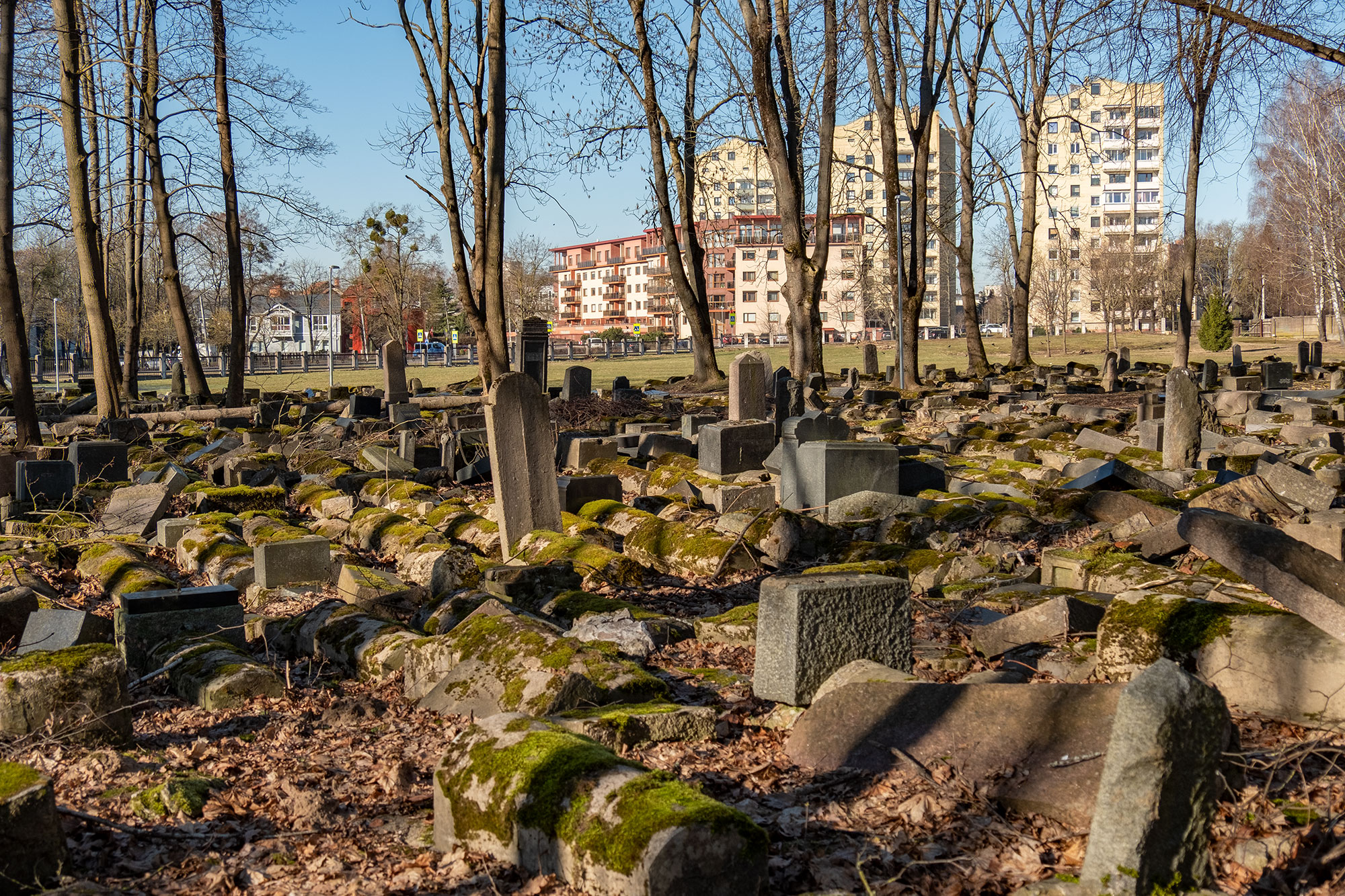
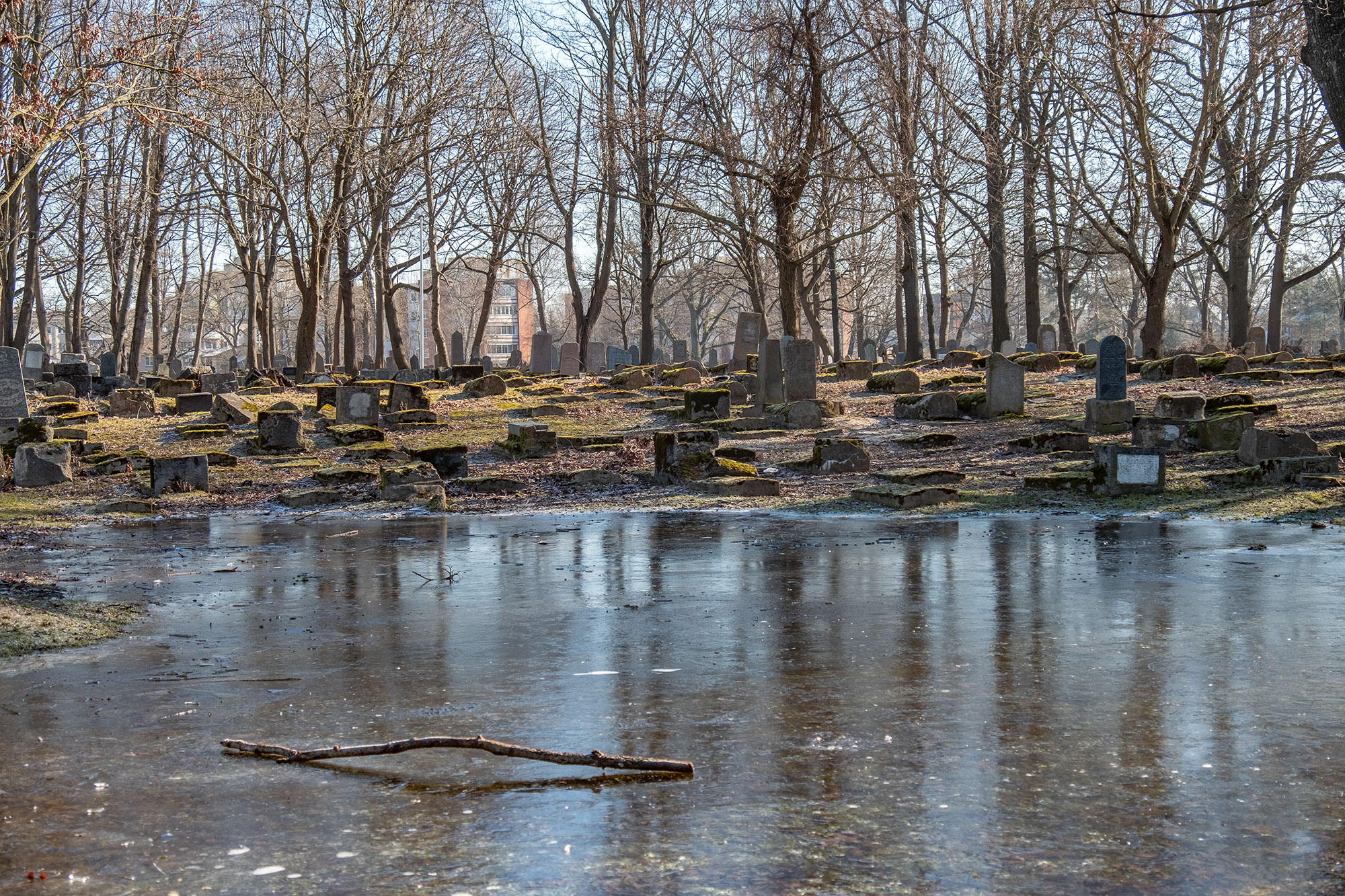
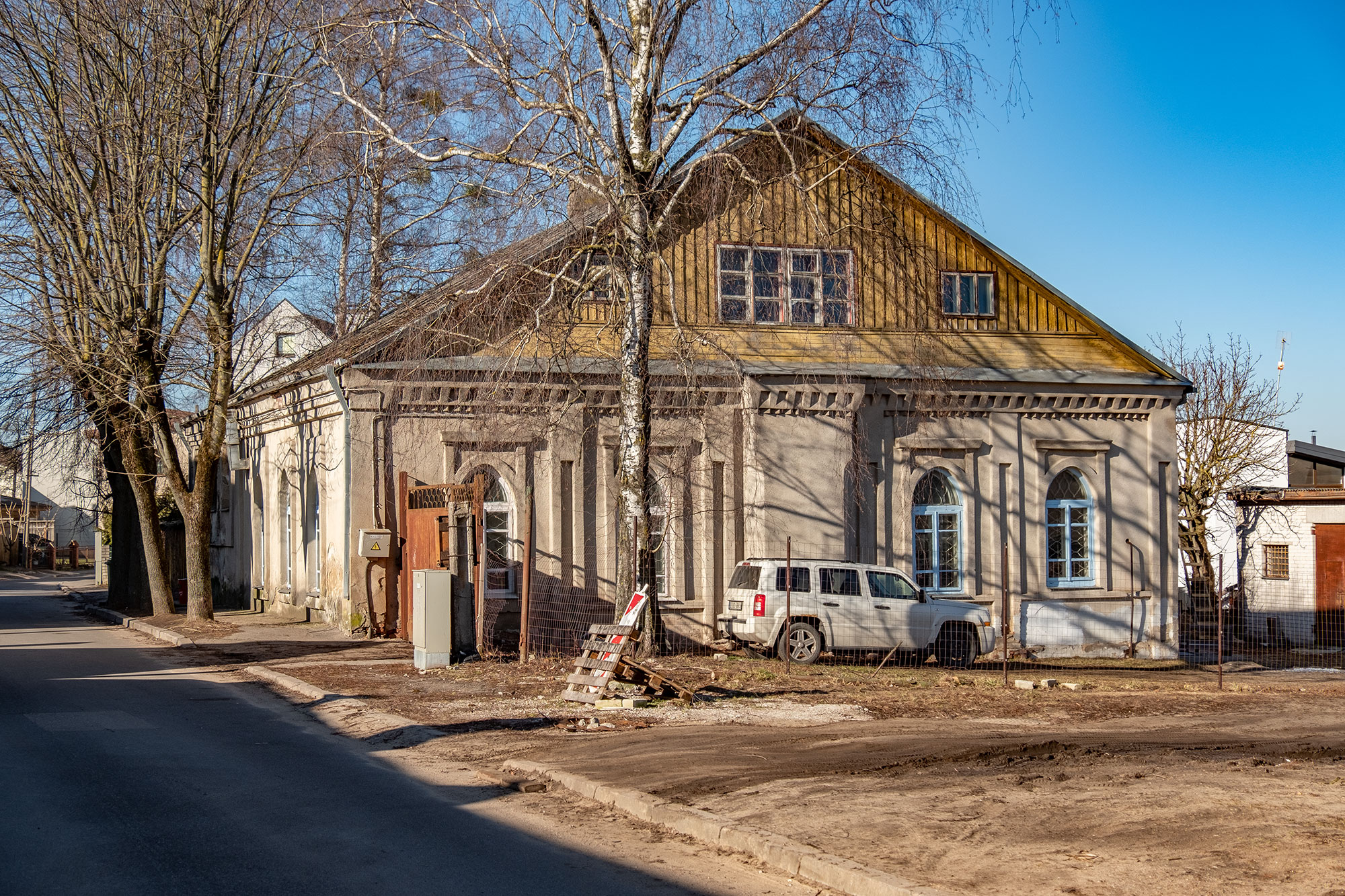
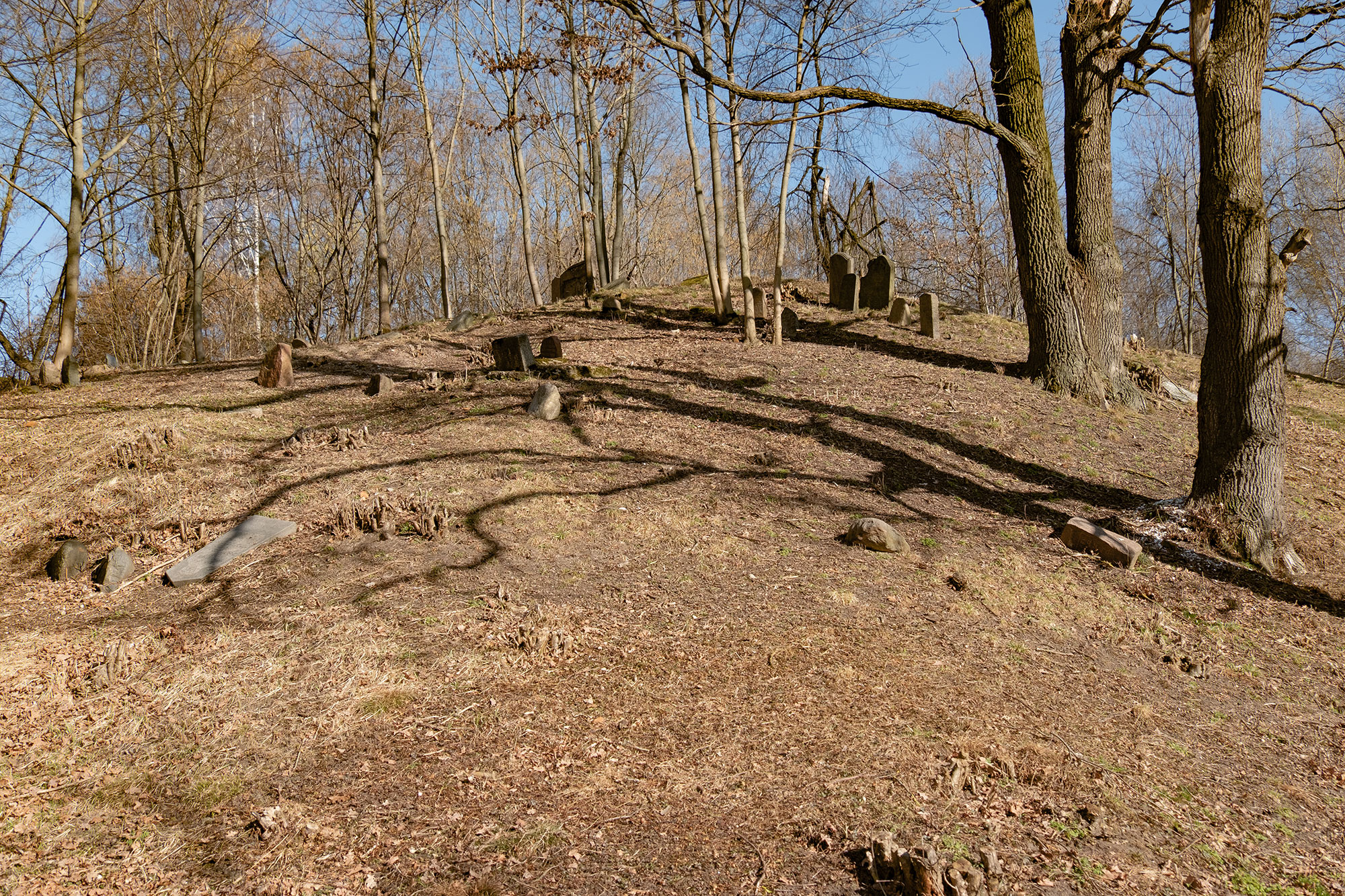
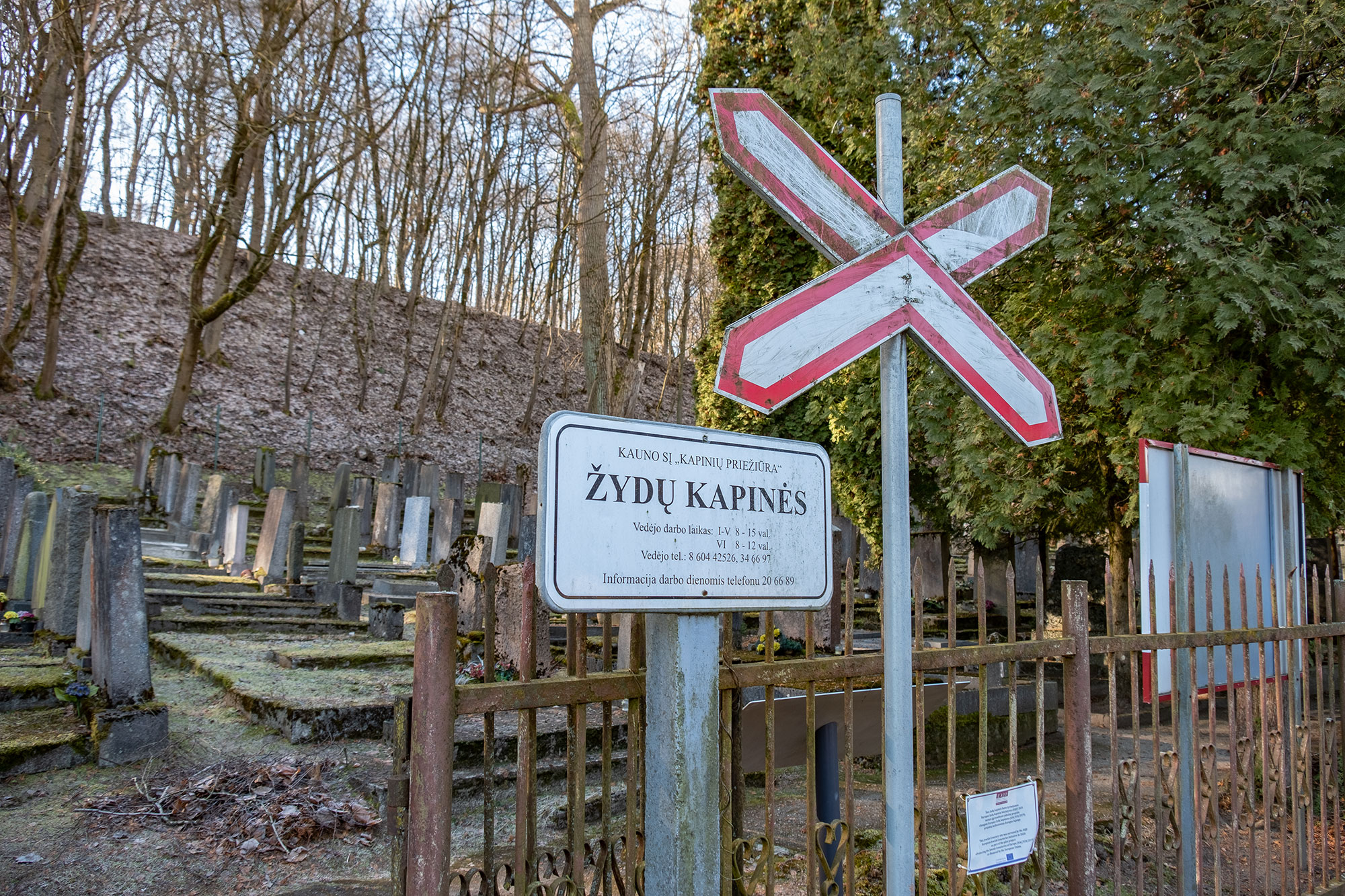
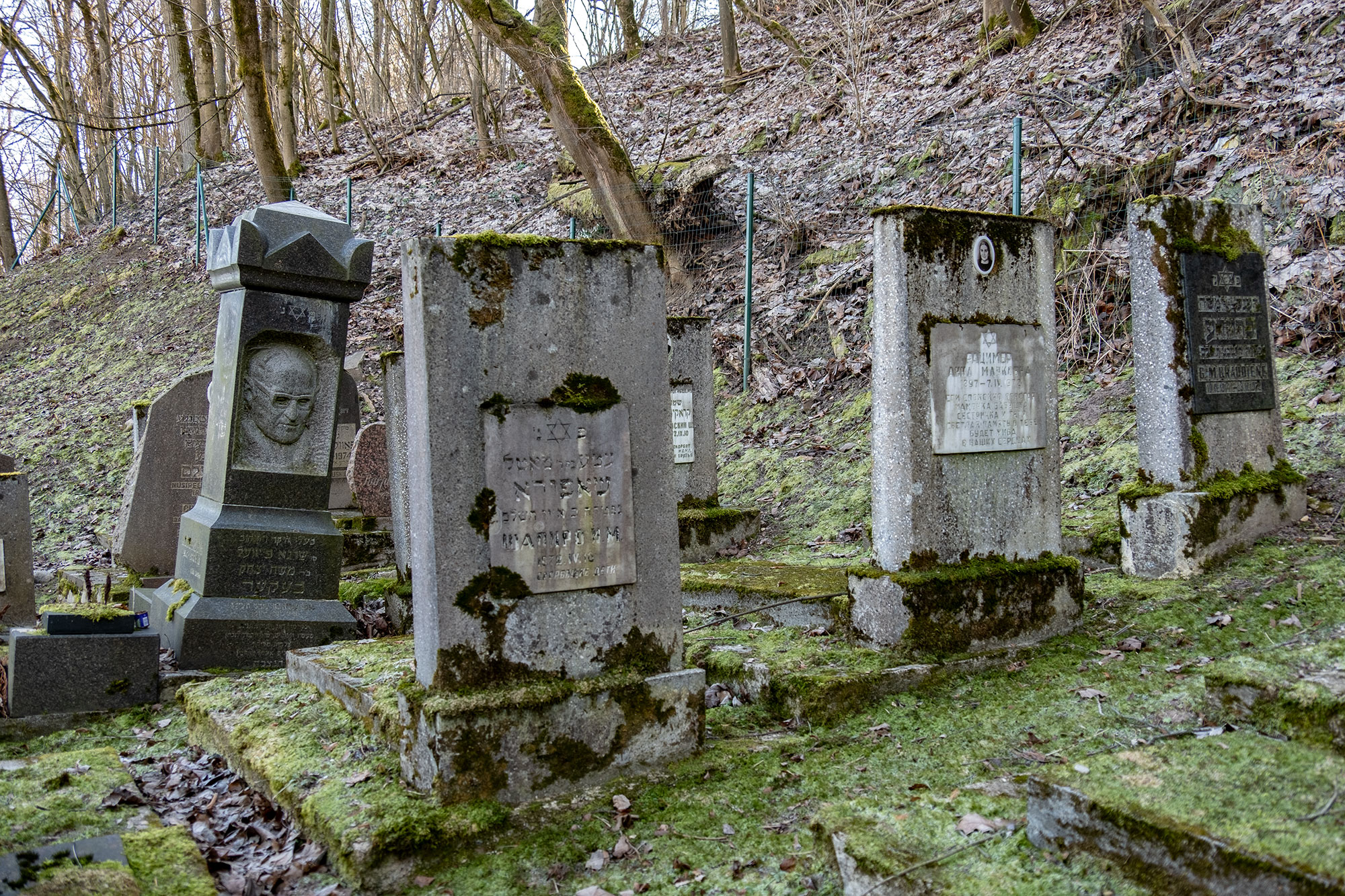
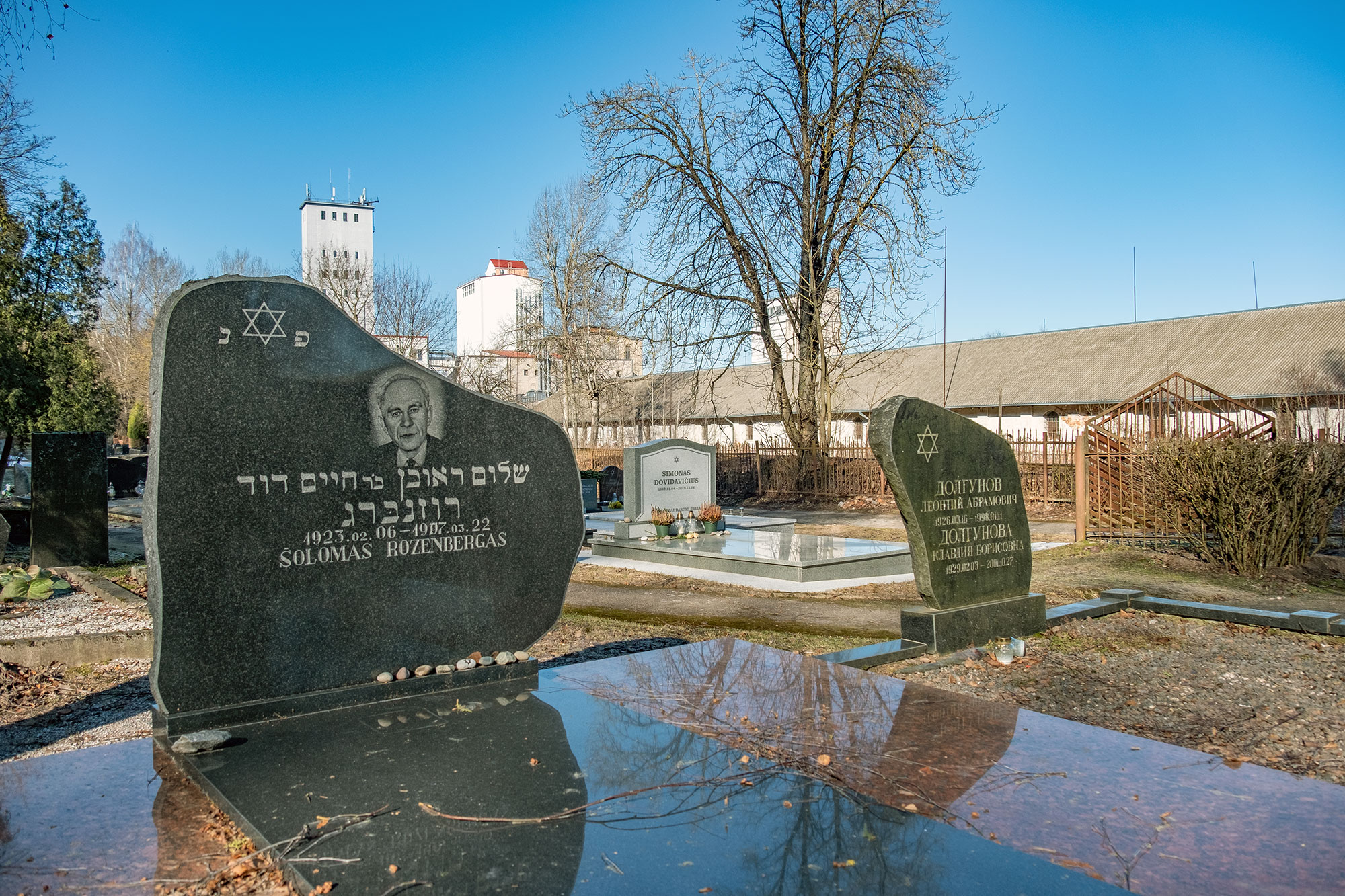
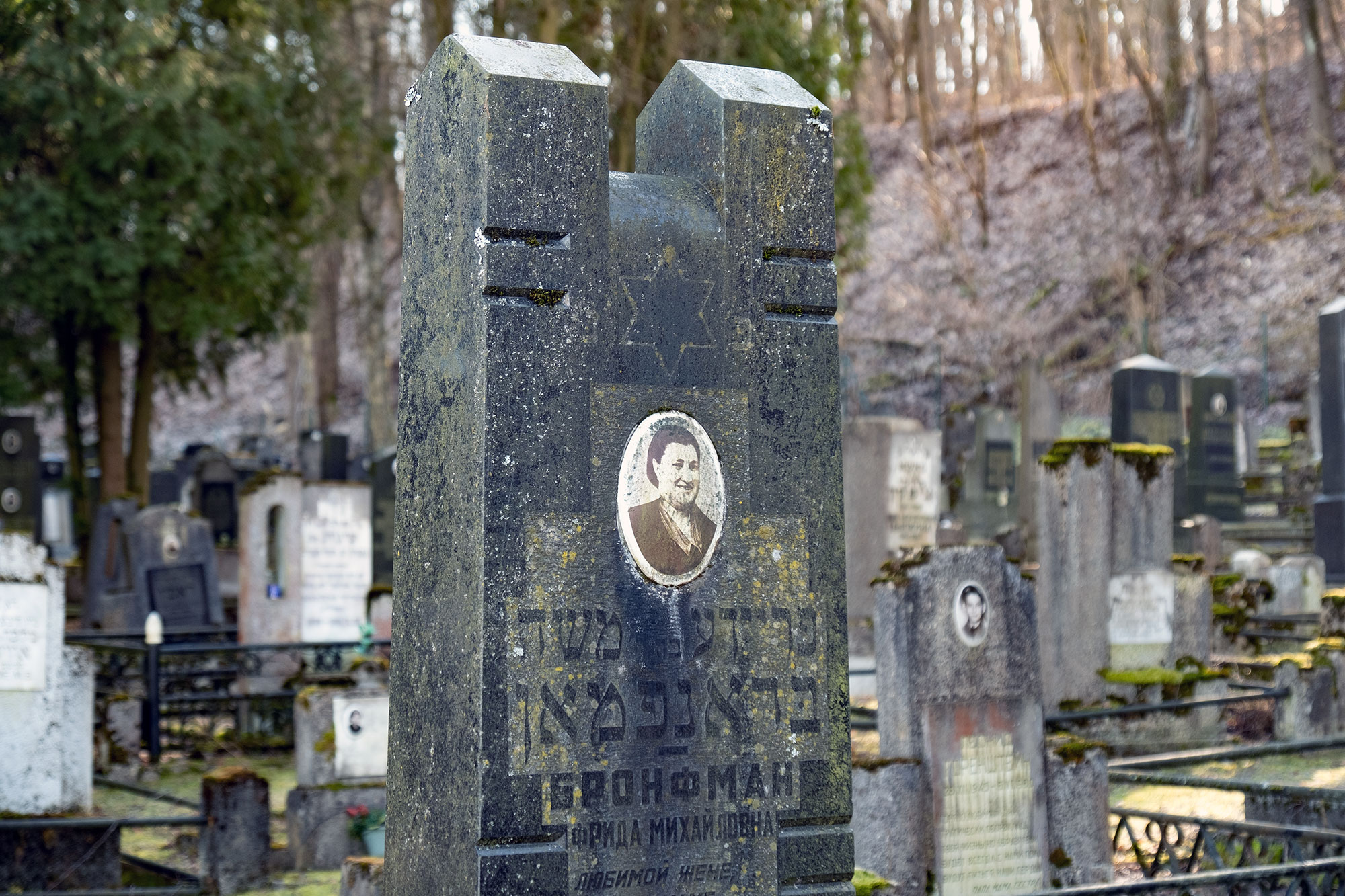
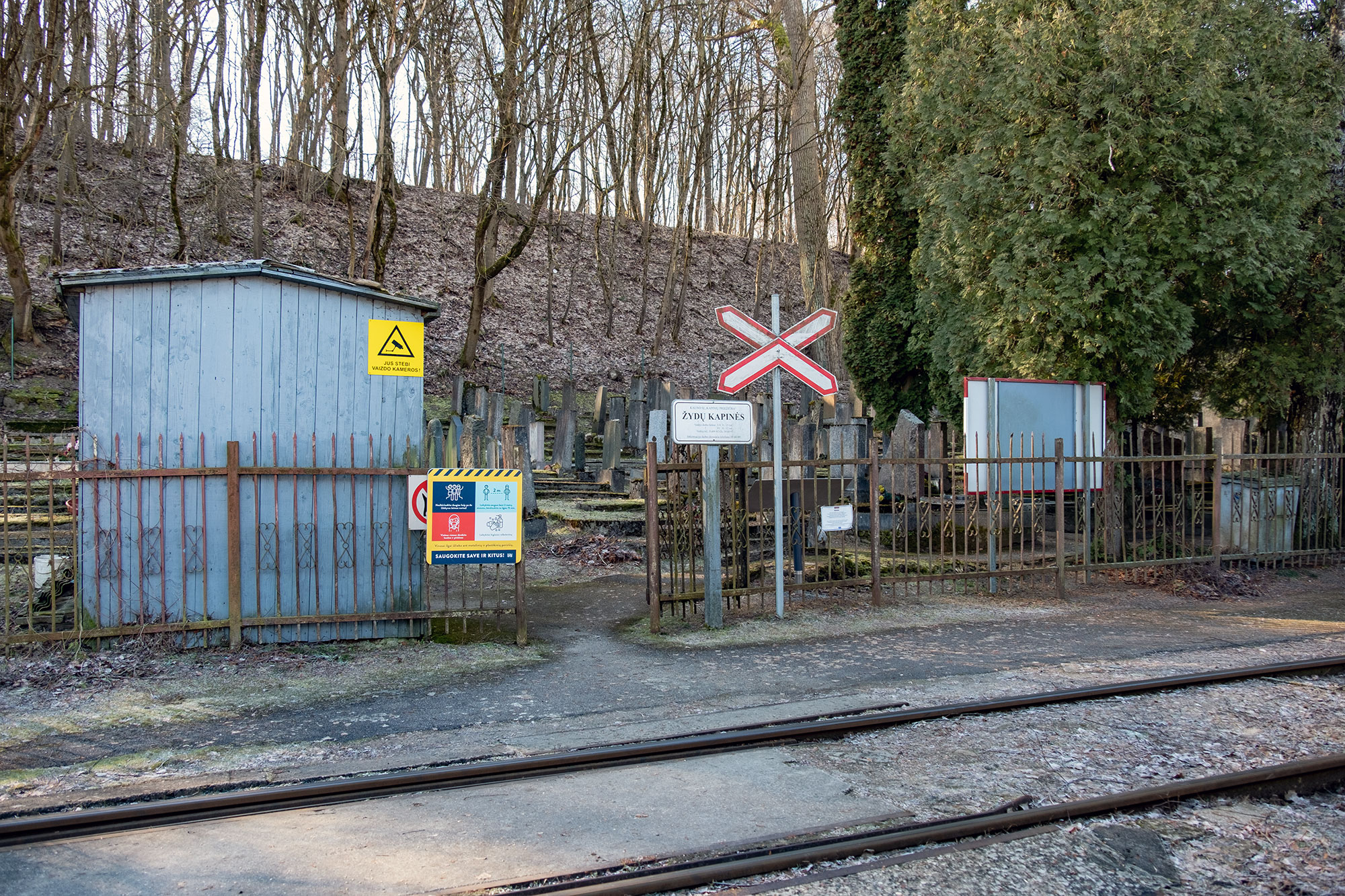
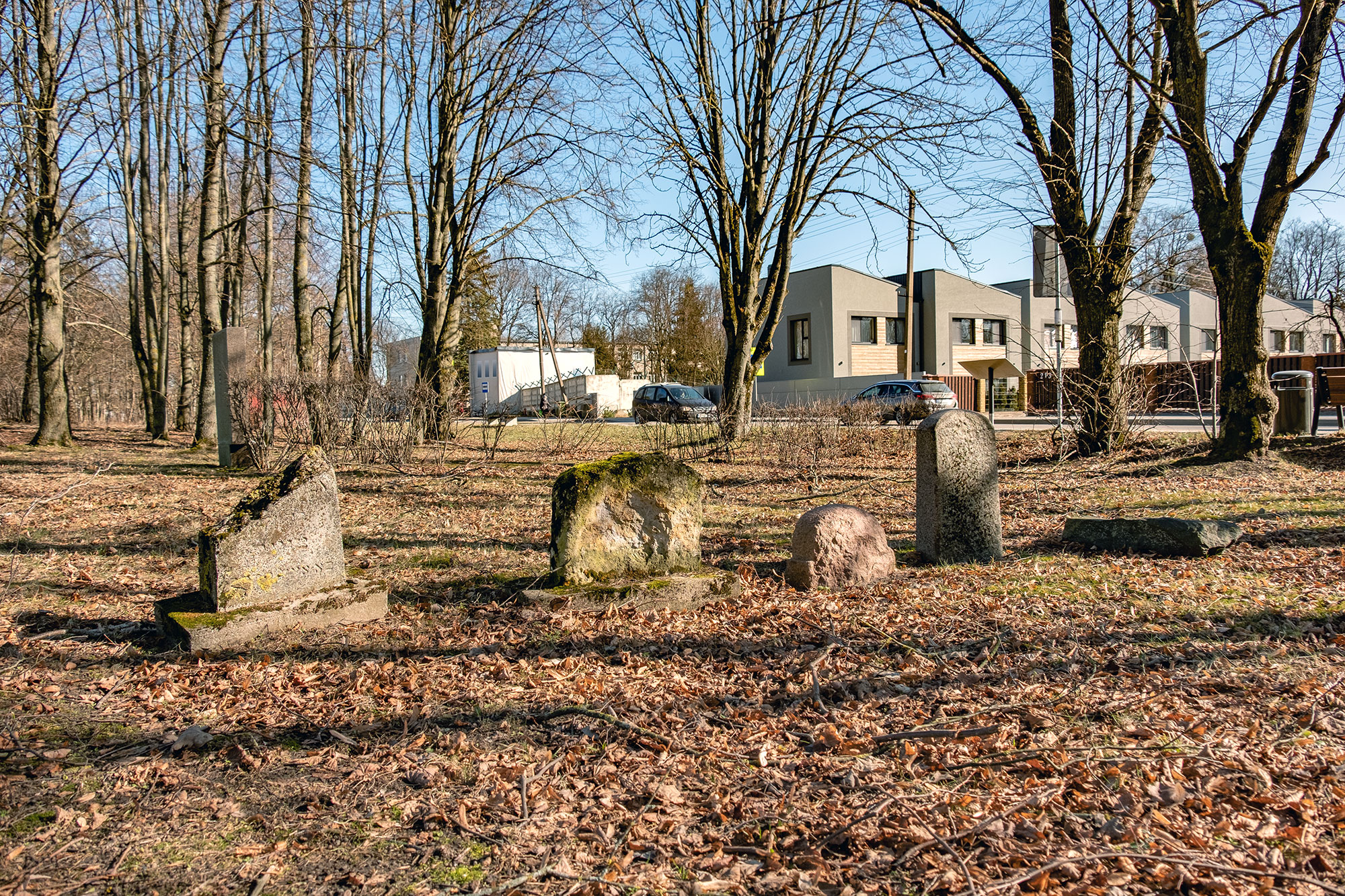
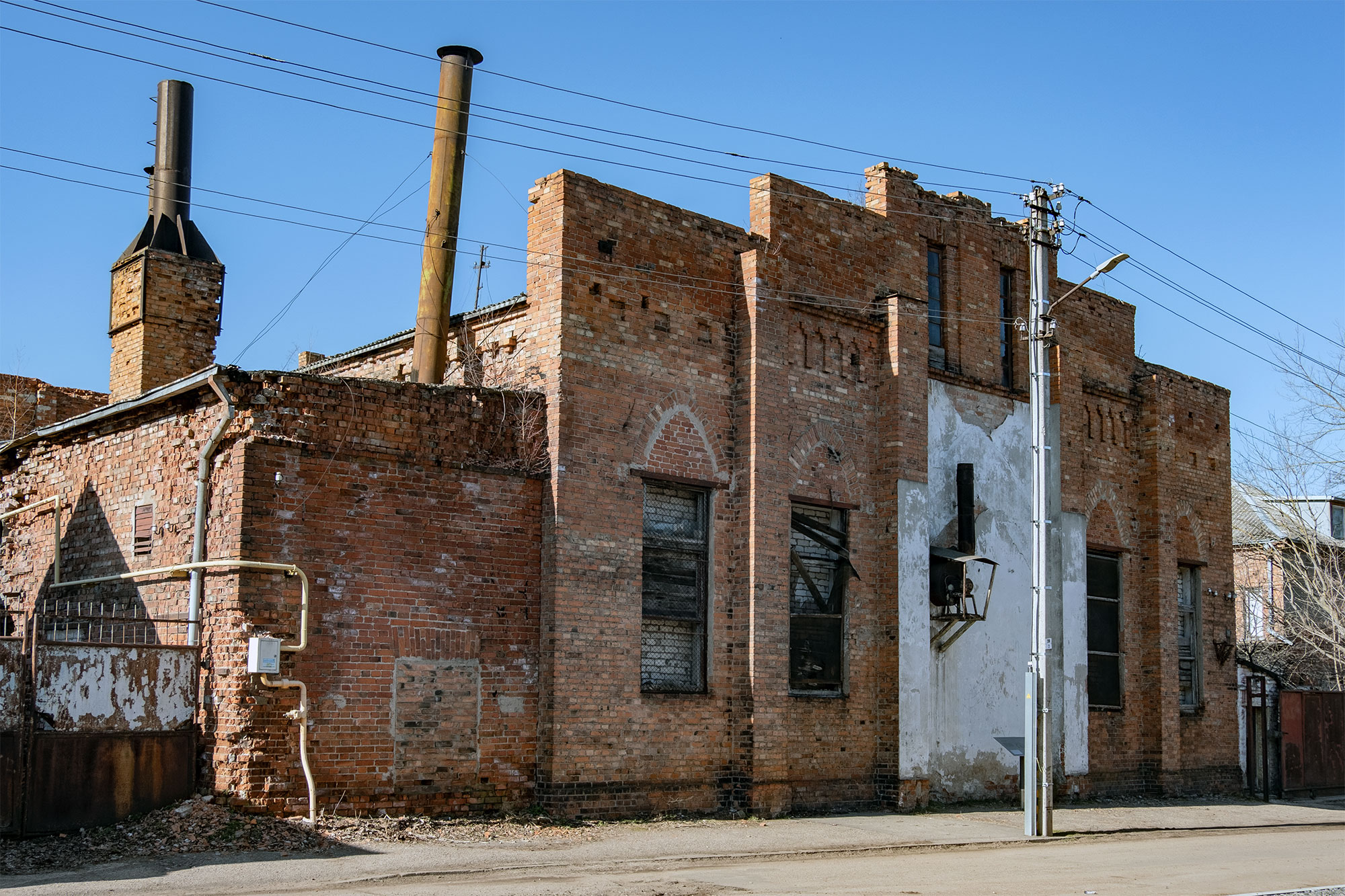
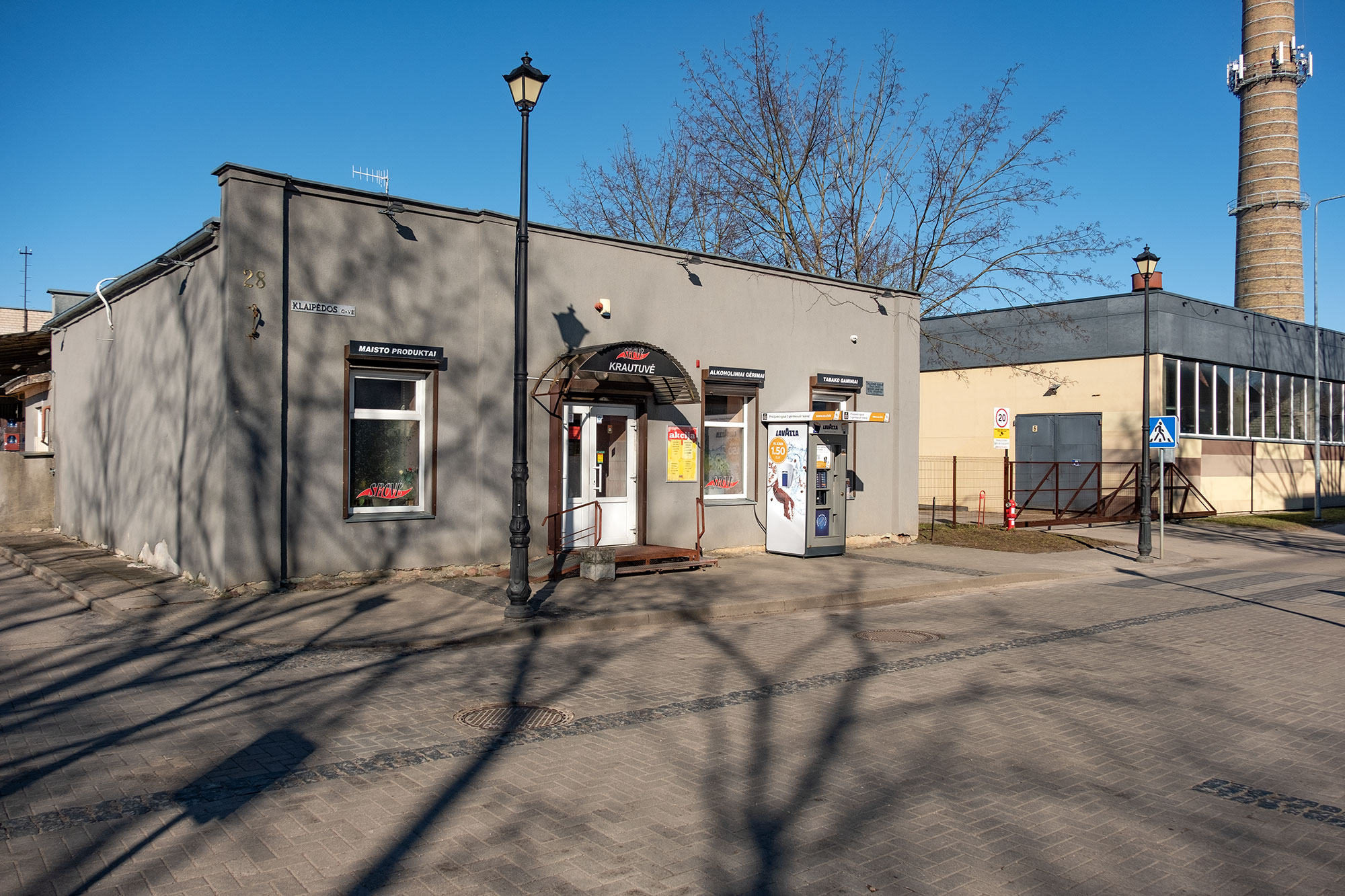
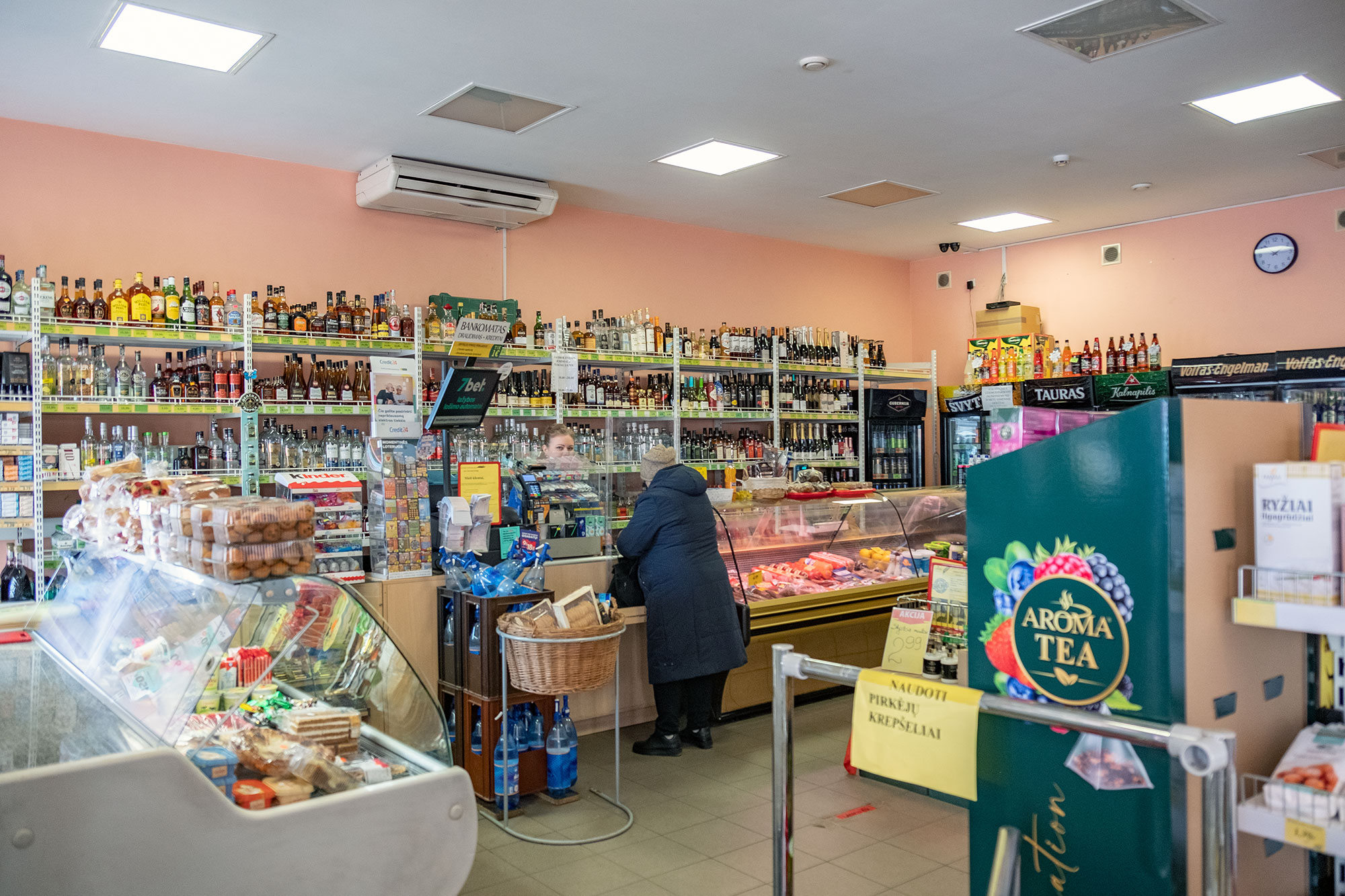
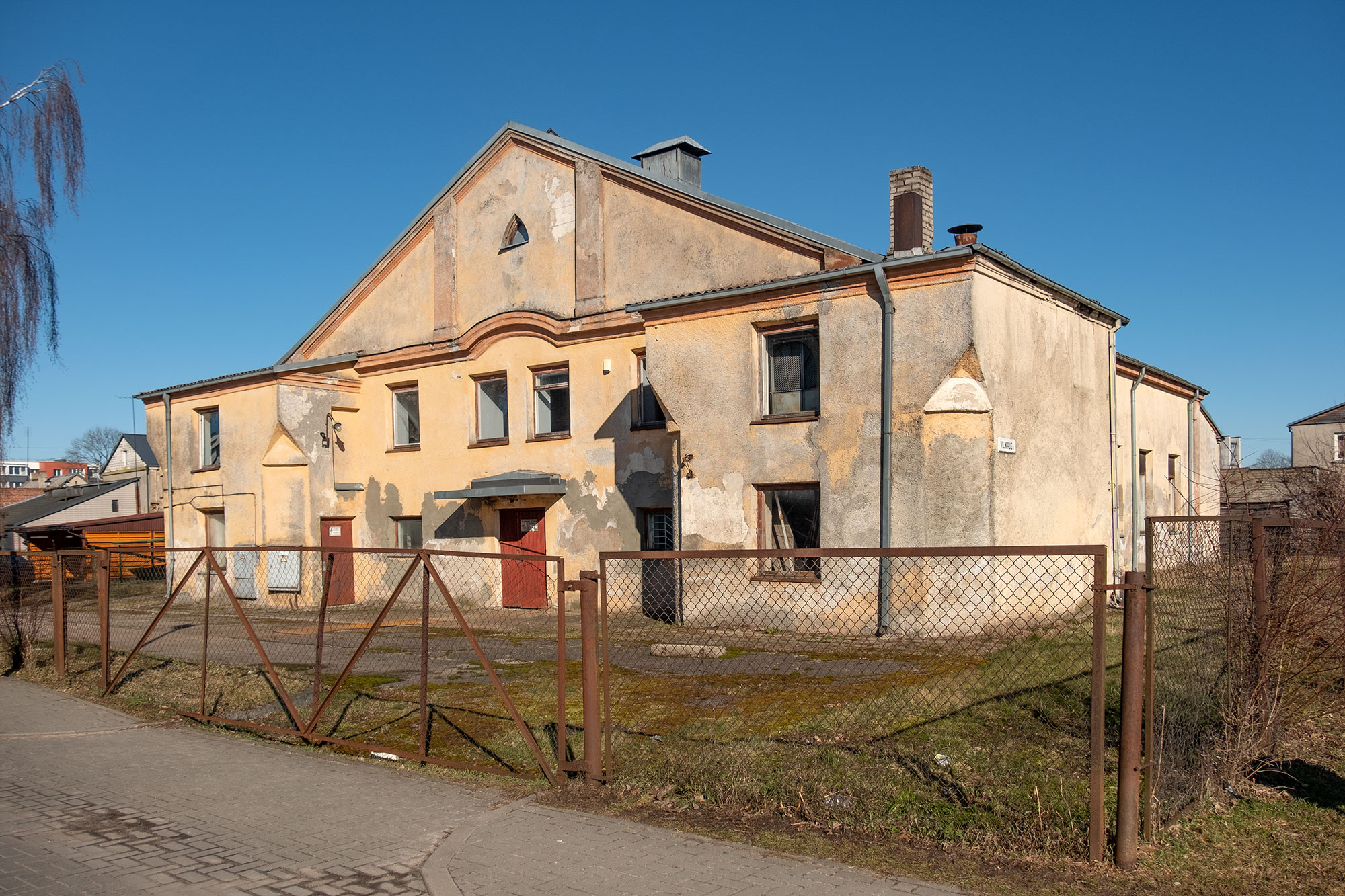
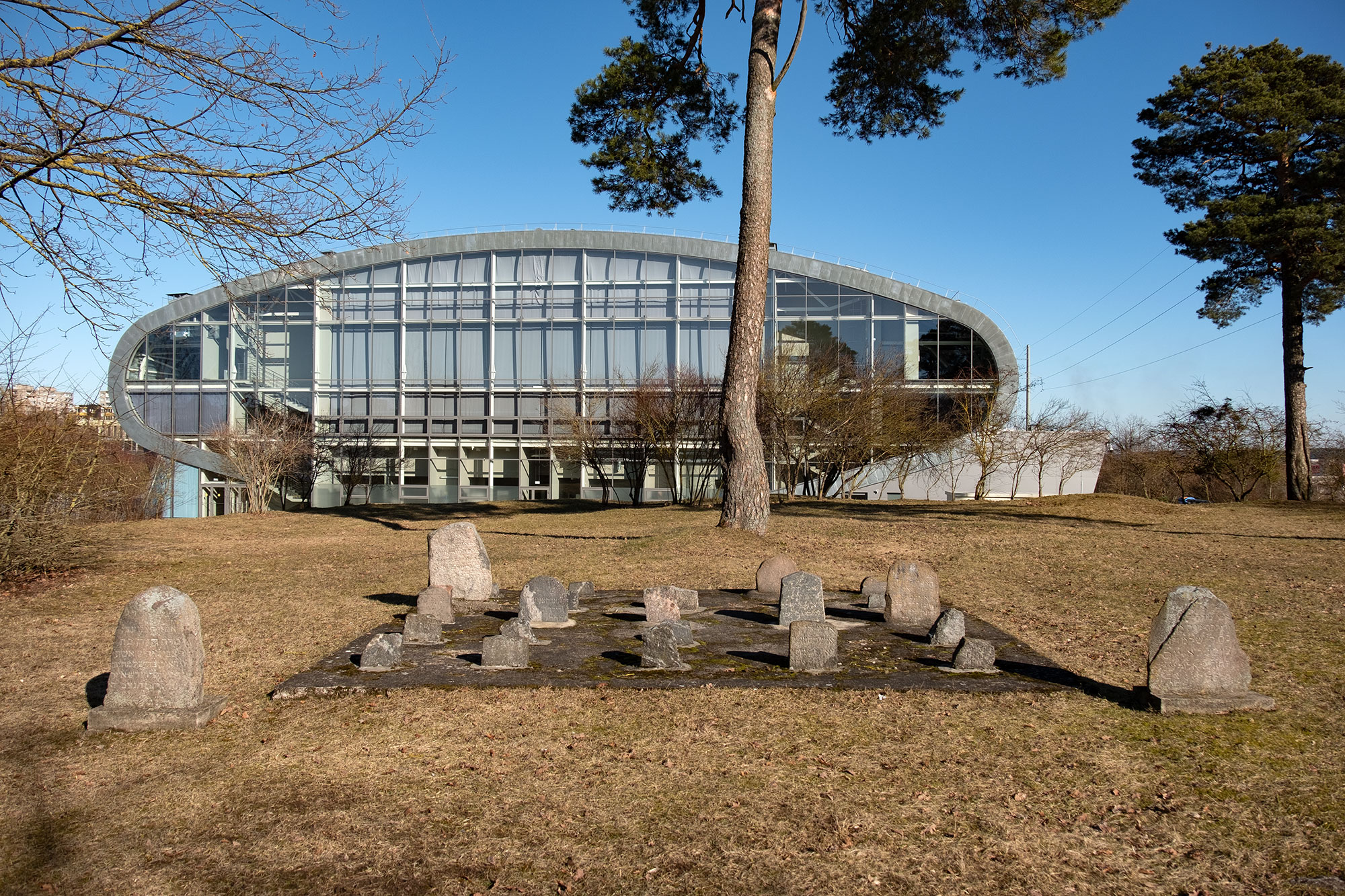
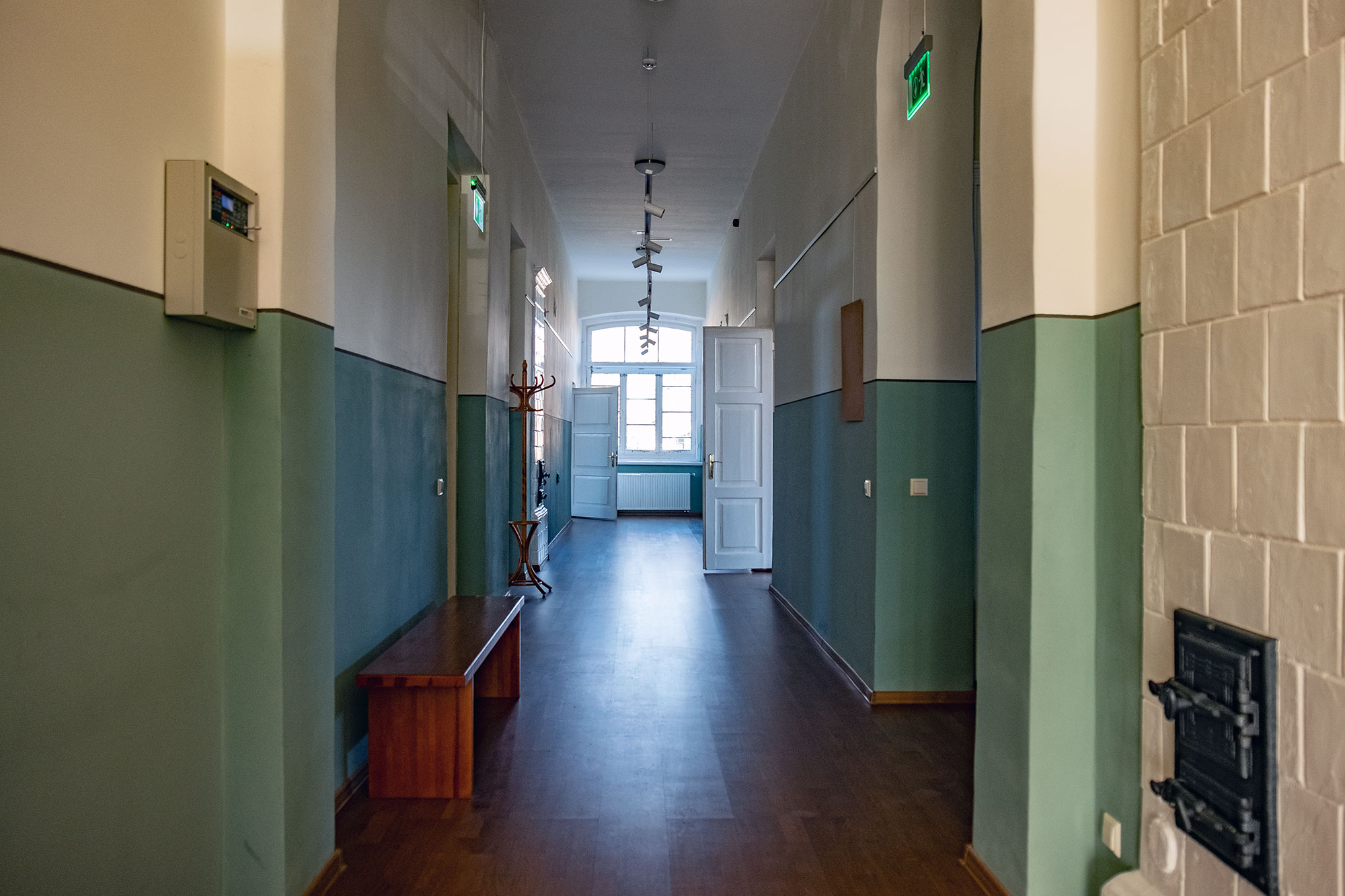
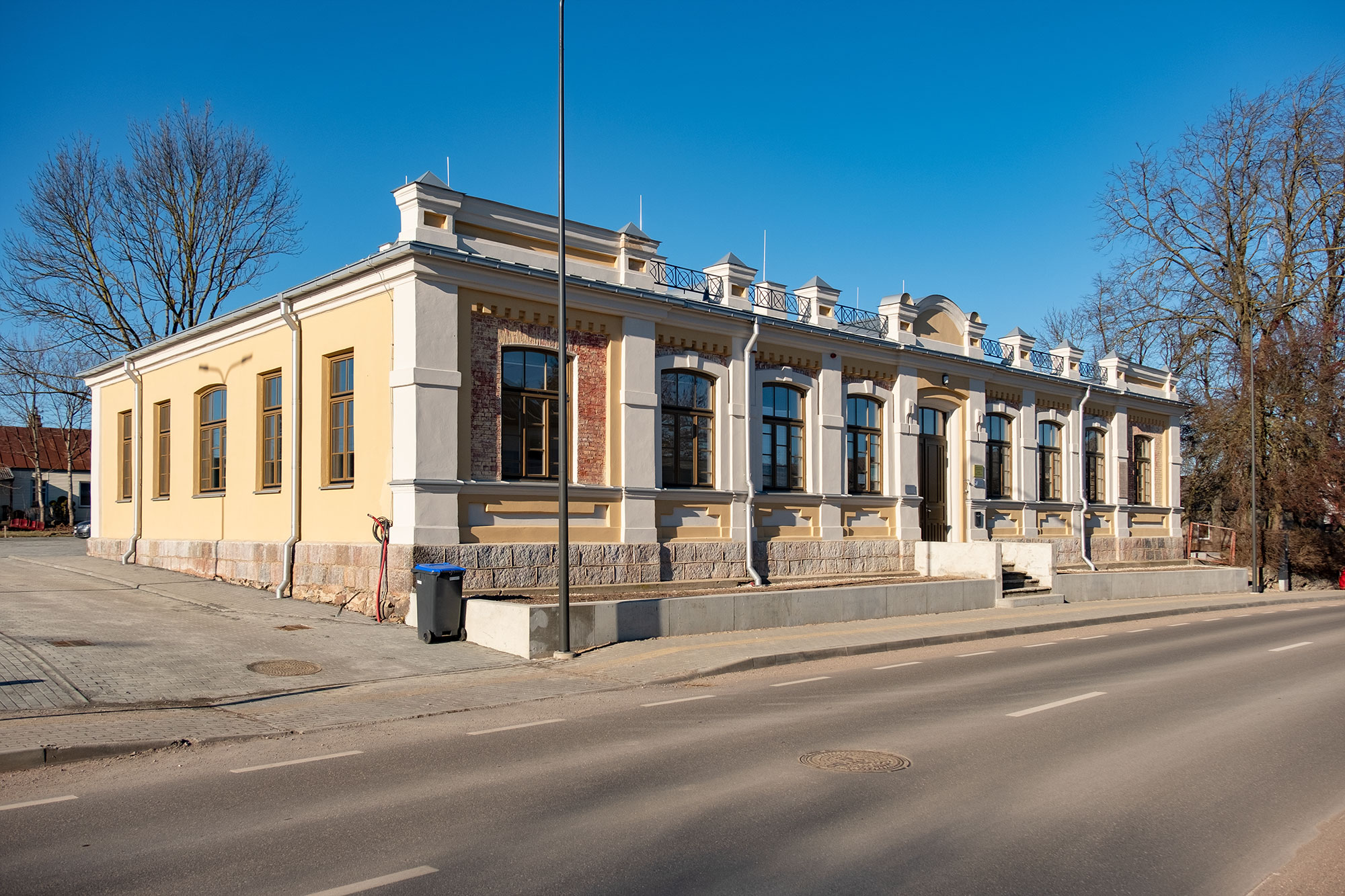
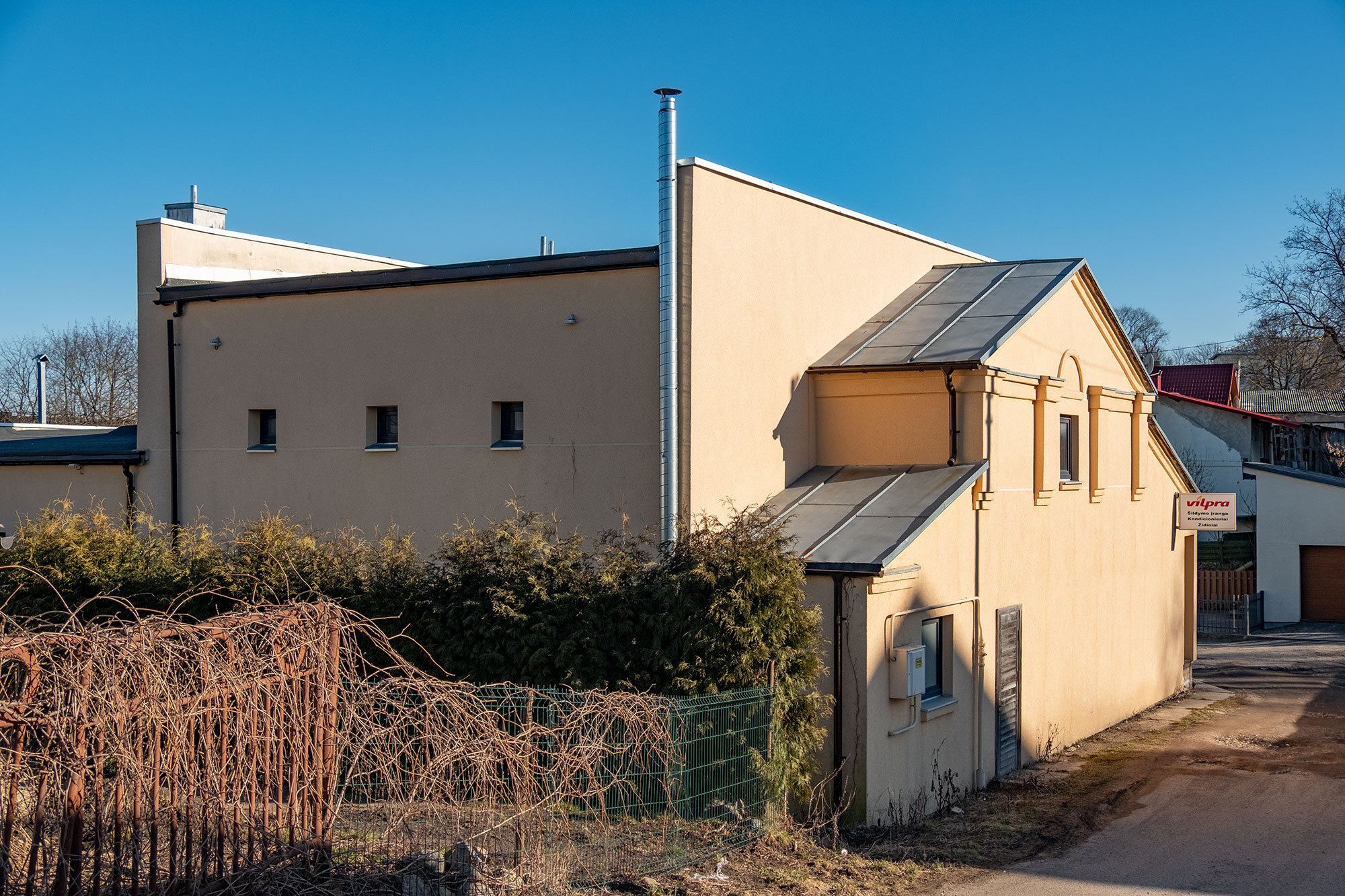
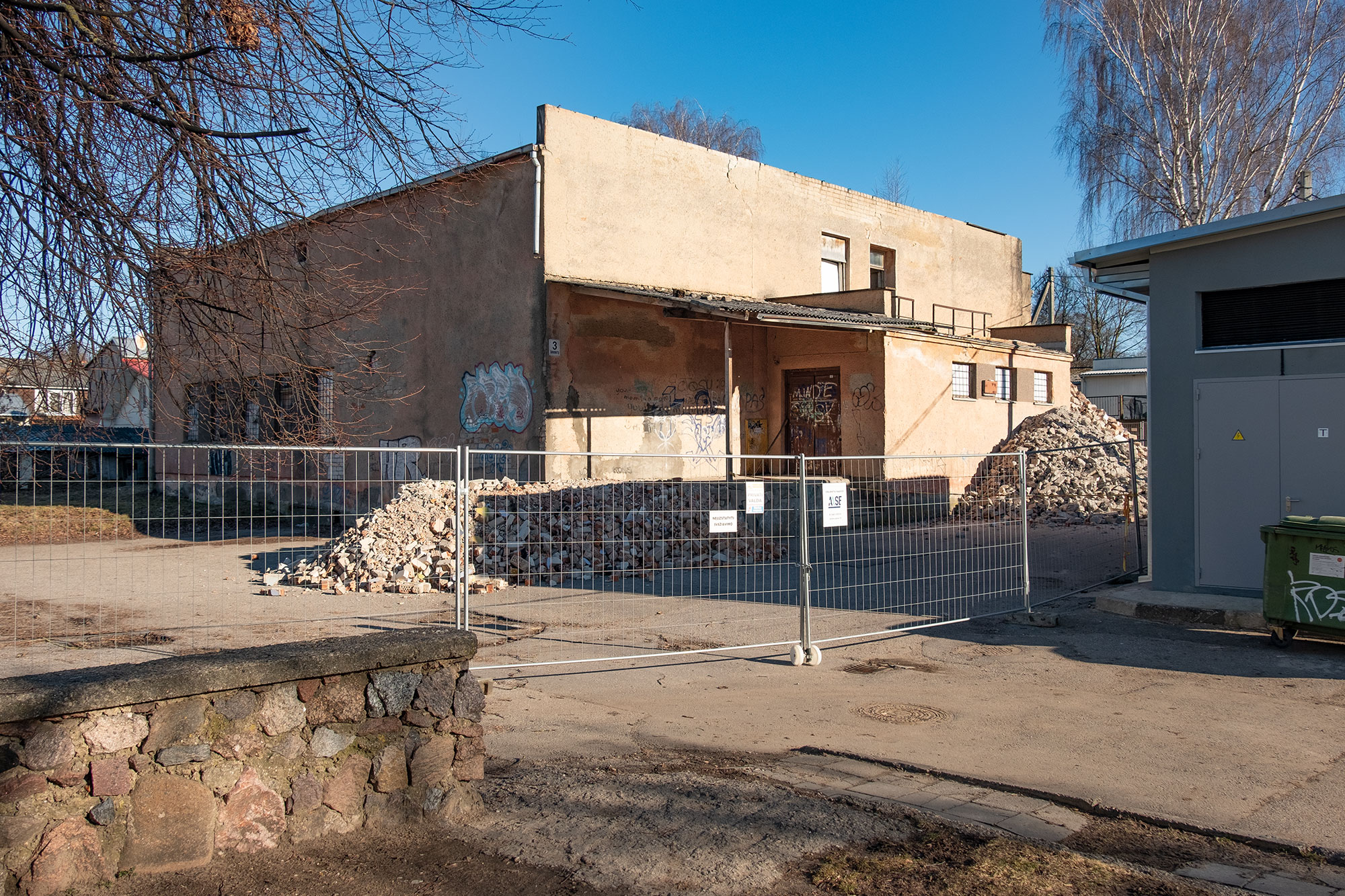
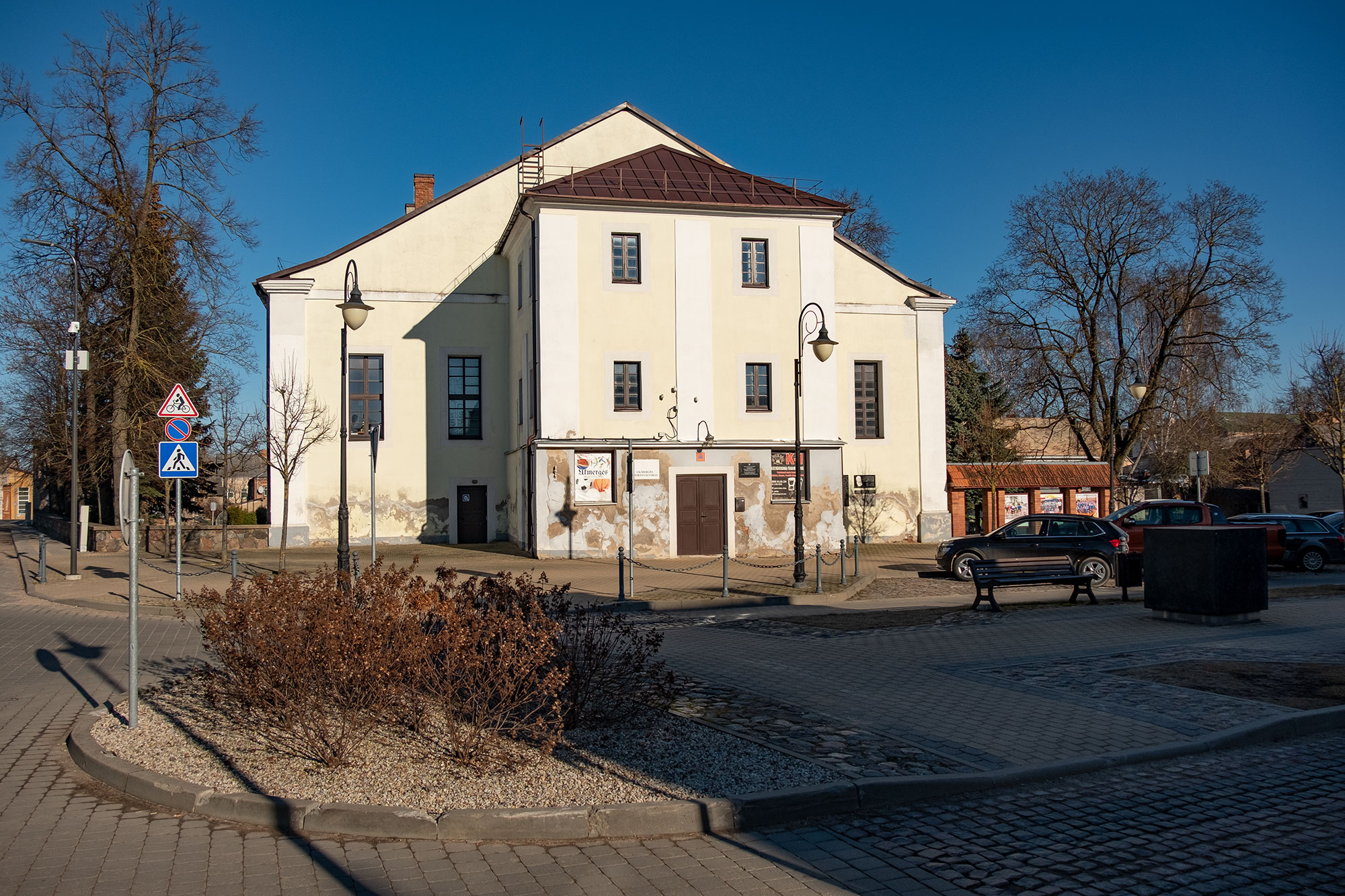
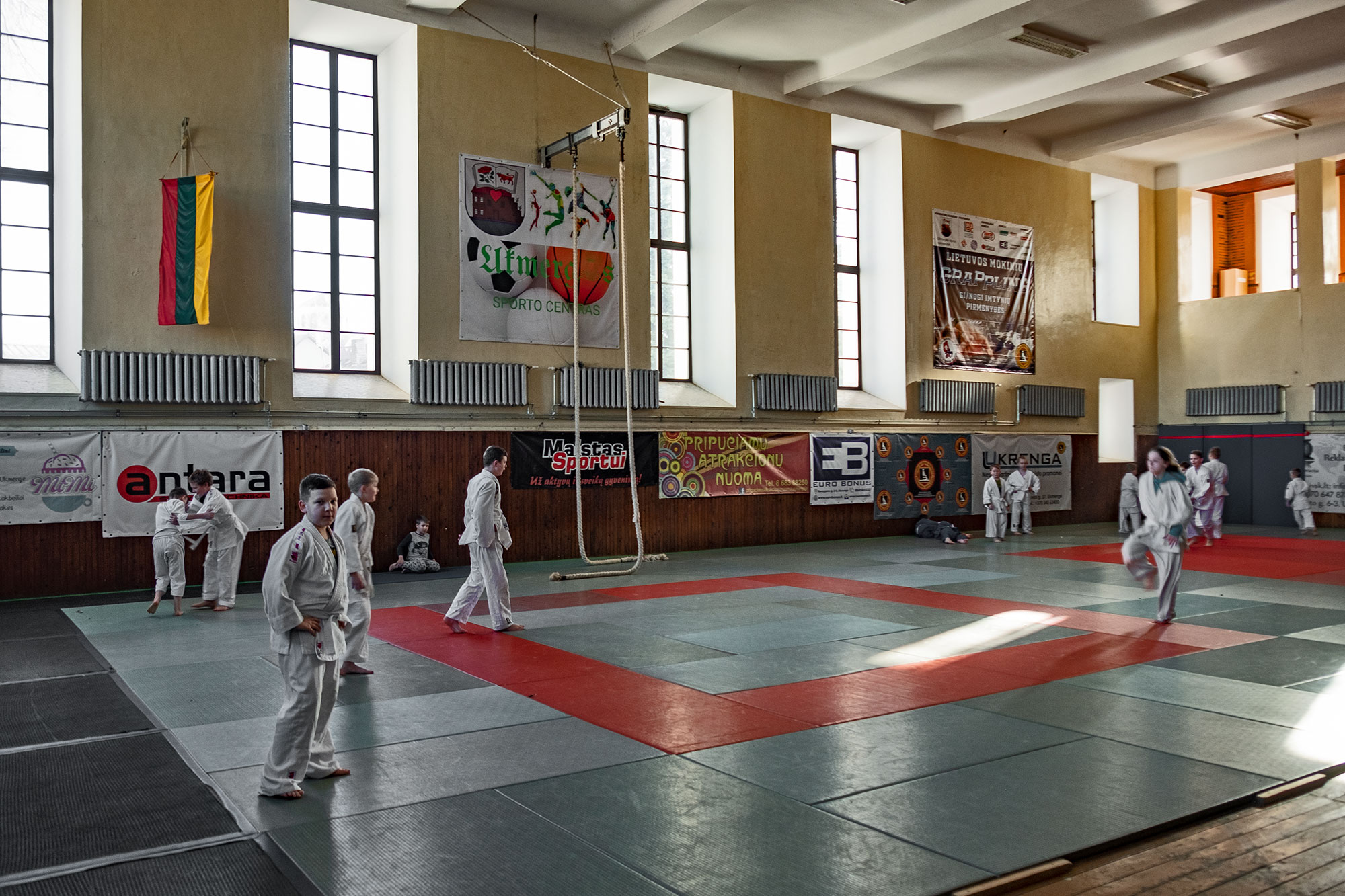
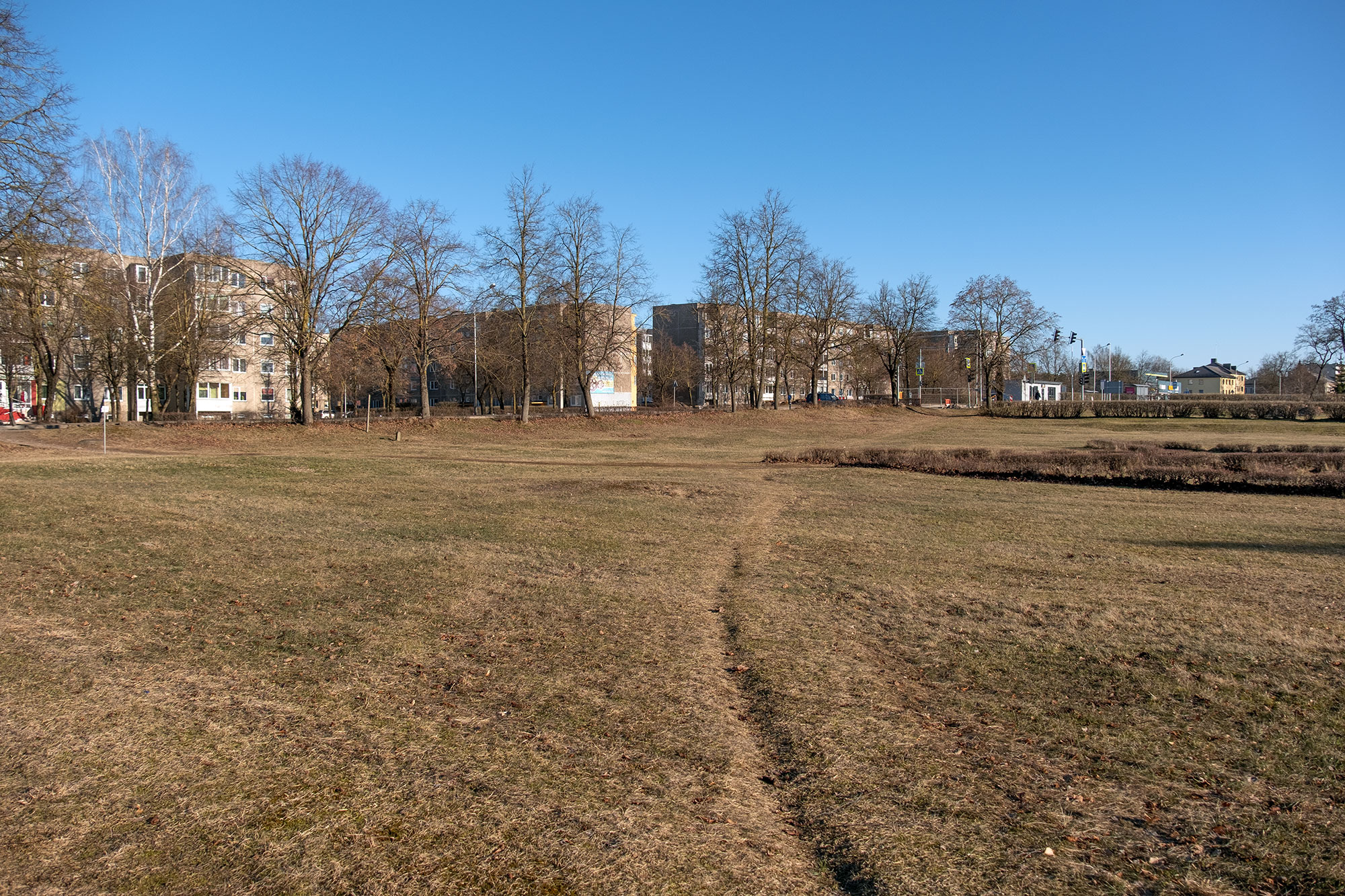
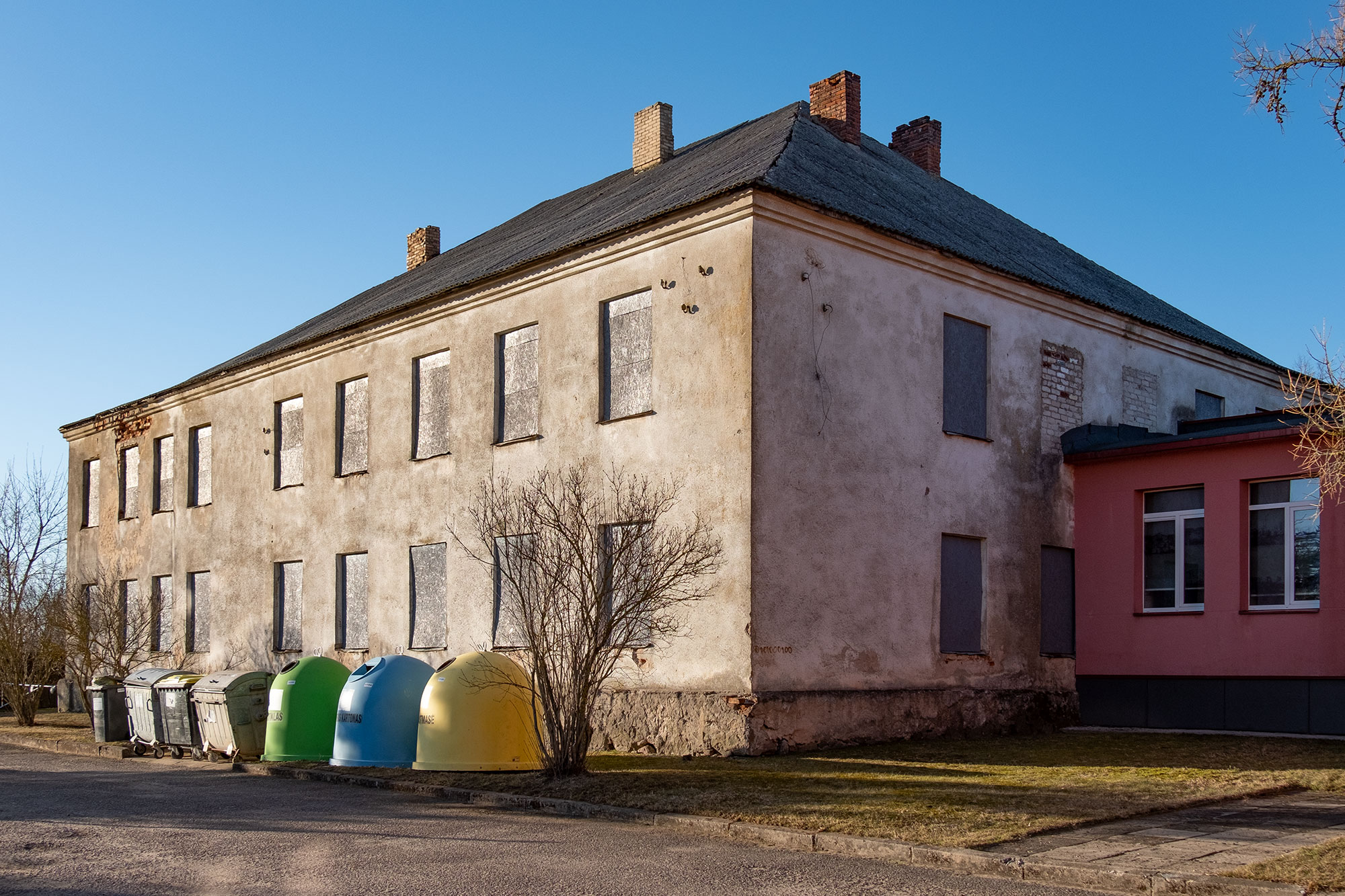
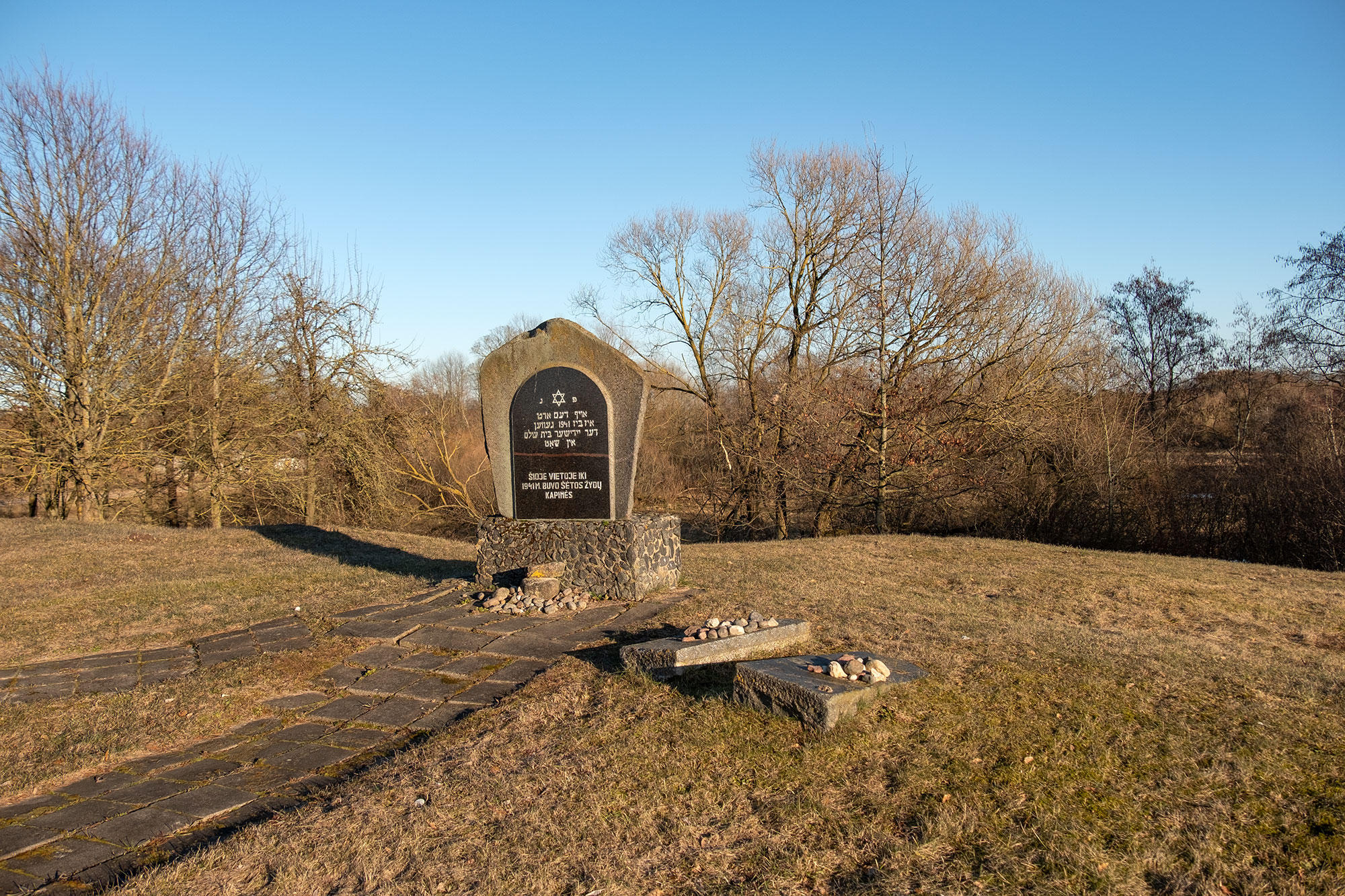
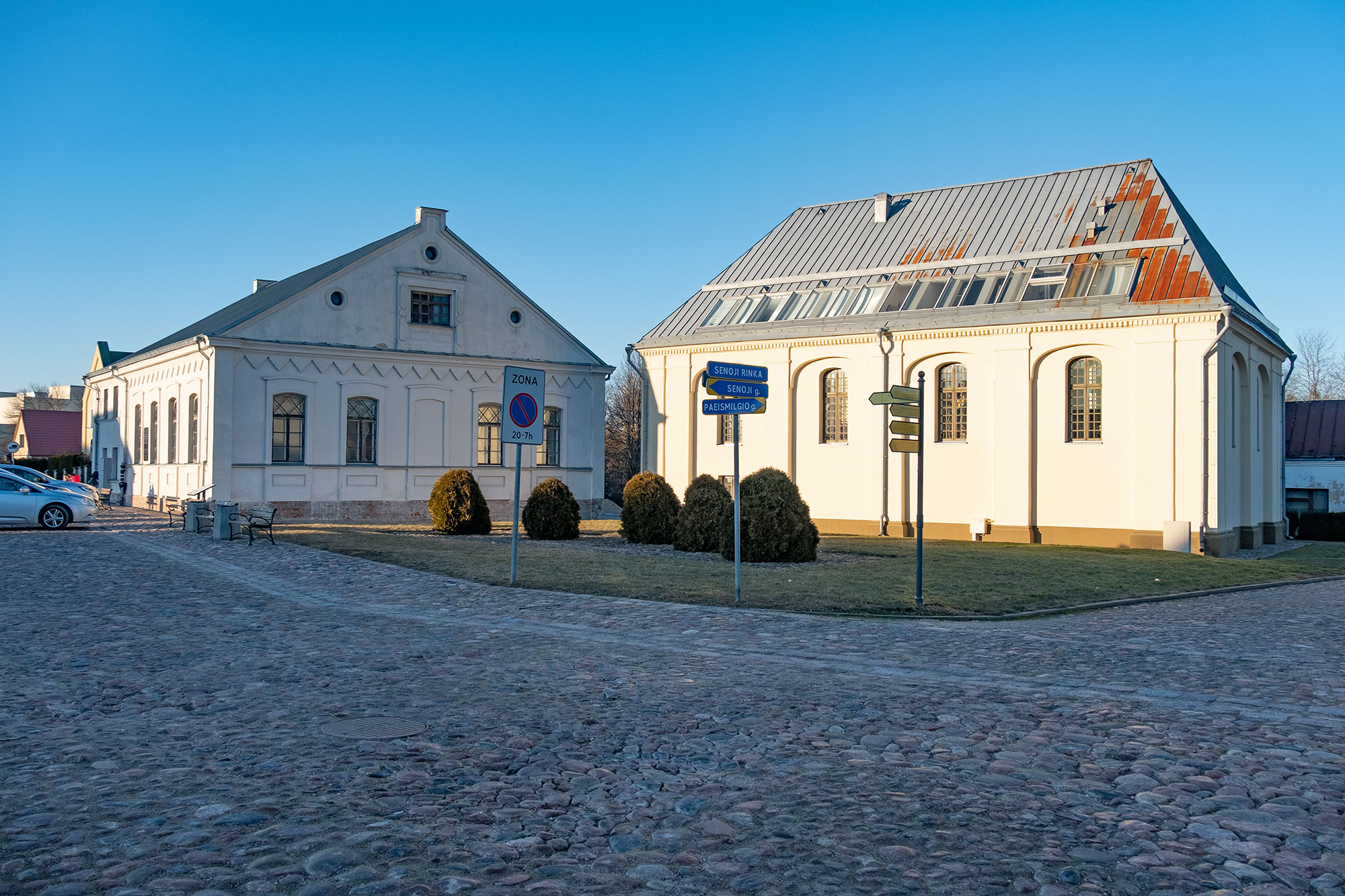
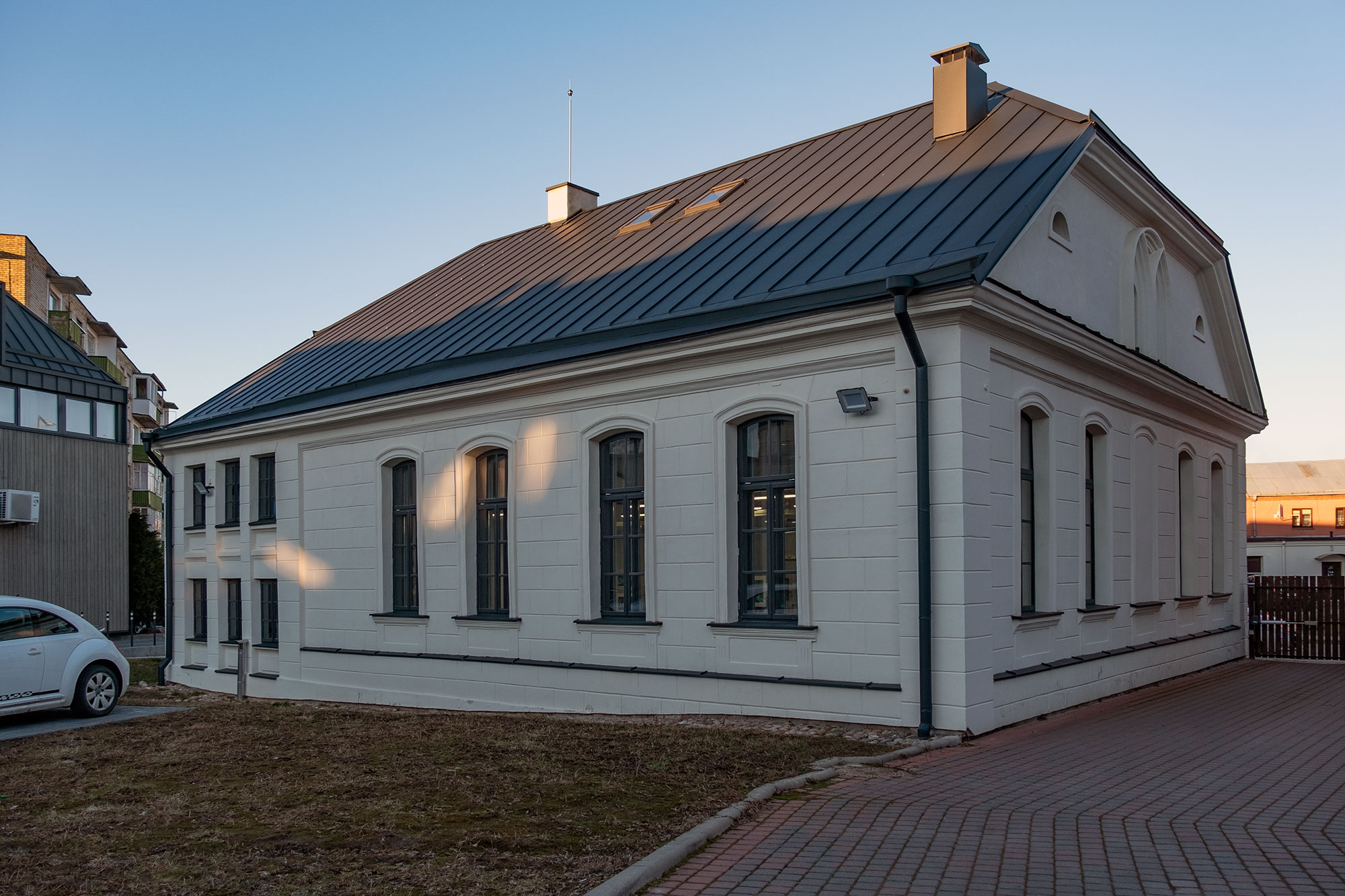
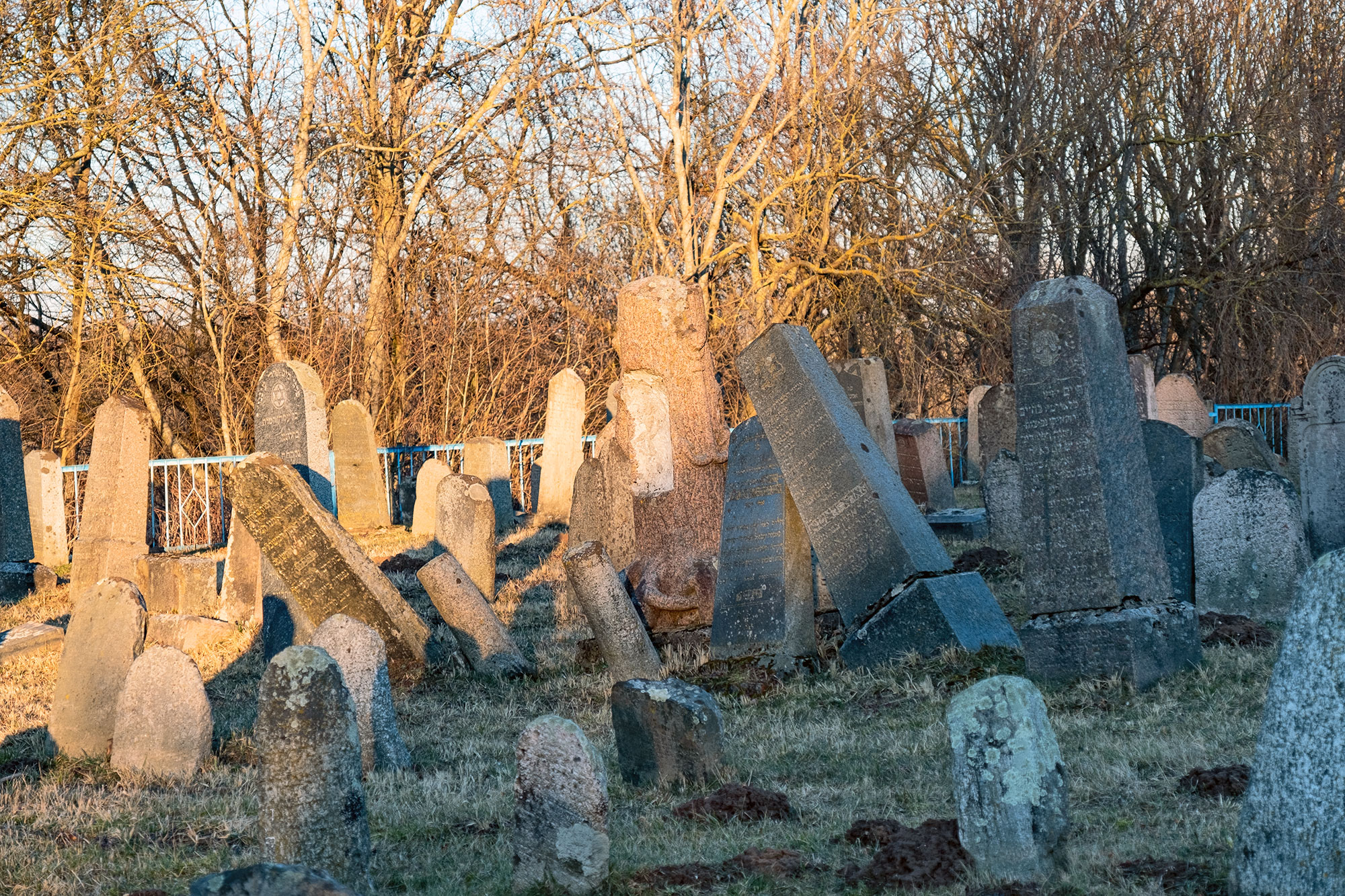
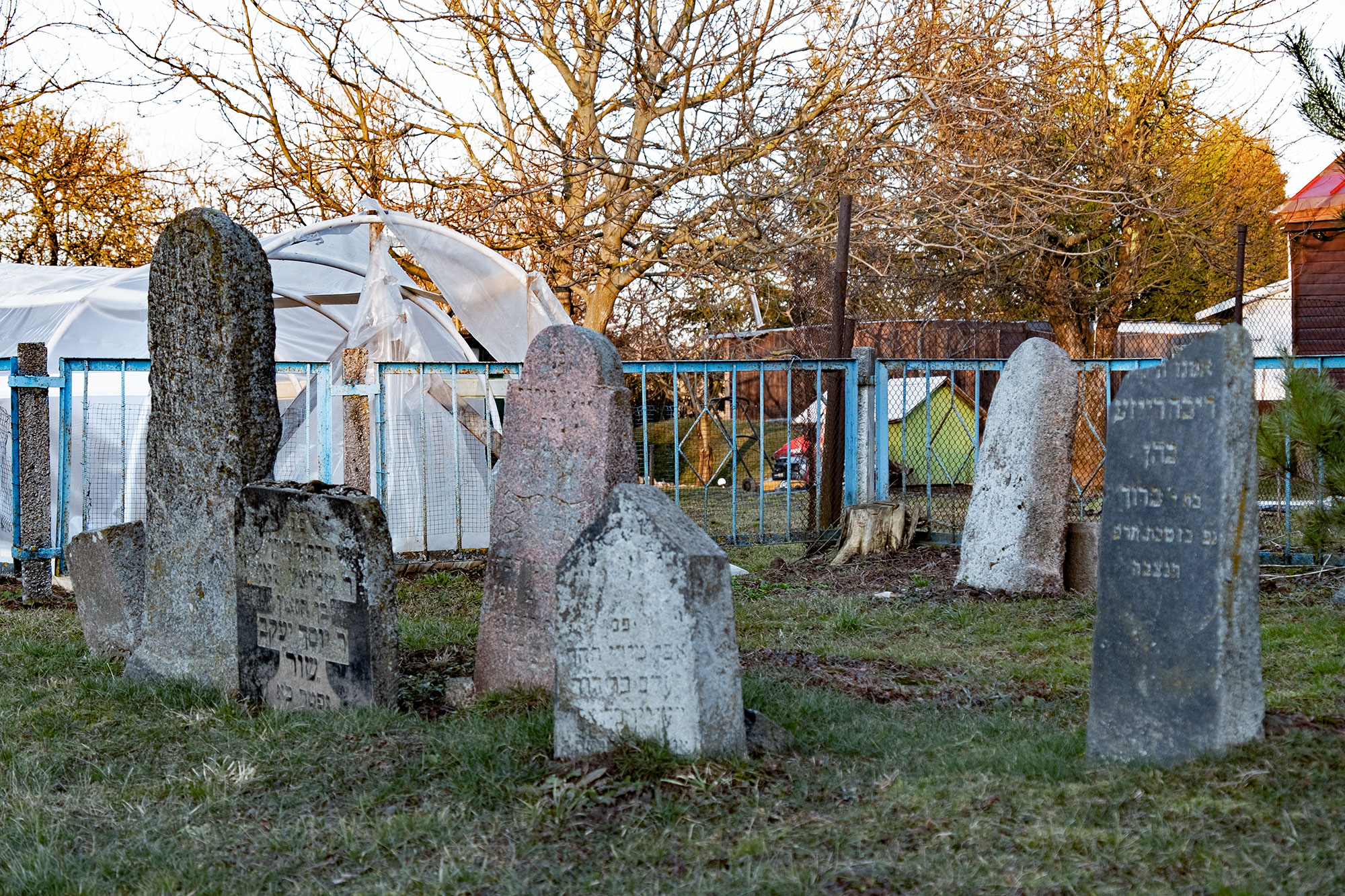
Much has been said and written about Vilnius, comparatively little about Kaunas. Lithuania’s second largest city seems to be anchored in the collective memory mainly because of the barbaric murder of the Jewish population by the German occupiers, and less because of its rich Jewish heritage. Yuliya and I started our walk early in the morning. Again, it was a day with bright blue skies – not my favourite photo light.
Two synagogues we had already visited in Kaunas yesterday, six we visited today – plus four Jewish cemeteries. Some have been restored very well, for others apparently no dignified use has been found yet. They are abandoned and waiting for better days. Among the cemeteries, the one in the Žaliakalnis district stands out. Of course, also because of its impressive size, but also because of the density of graves and gravestones and its urban appearance. It differs fundamentally in the style of its gravestones from the cemeteries in the villages and shtetls. The Jewish cemetery in the Aleksotas district is a peculiar place. If you want to visit it, you first have to cross an industrial area and then pass unsecured railway tracks. It is the last Jewish cemetery still used for burials in Kaunas today.
The cemetery in Jonava is also peculiar. You climb a hill via steps to find yourself in a kind of park. Apparently the cemetery was destroyed by the Soviets and some of the gravestones were put back up alreay in the 1990s. It’s all done with a lot of love and the whole area is very well kept. And yet the place leaves a strange feeling. The gravestones stand in straight rows, can no longer be assigned to the actual graves and are arranged more according to aesthetic criteria.
In Ukmergė we found a lively Jewish community with a very beautifully restored community centre in a former Talmud Torah. We were warmly welcomed and allowed to take photographs. Of the three remaining synagogues, the Great Synagogue is certainly the most impressive building. Today it serves as a sports hall.
In Kėdainiai, we finally took a break, ate something, rested a bit, took pictures of the Great Synagogue and the Beit Midrash. Actually, we wanted to make another stop in Krekenava, but the sun was already too low, we postponed it until the next morning. It was already dark when we finally reached our hotel in Panevėžys. We took a last look at the news of the day. Putin’s plan to subjugate Ukraine within a few days and impose his will on the country obviously did not work. However, the continued terror against the civilian population did not bode well. The worries remained and accompanied us into a restless sleep.

This work is licensed under a Creative Commons Attribution-NonCommercial-NoDerivatives 4.0 International License.
Many thanks Christian for all your wonderful photos. My wife, Toba’s, maternal grandfather came from Kaunas.
My g grandfather Benzion Horowitz came to New York from Kauvnas in the early 1890’s.
Any information about him or his family would be greatly appreciated.
Dear friend, please be safe in your travels… if you are able to get to Pakruojis, could you let me know? My mother’s family came from there – and from Kaunas, I believe (name of Stein/Bechstein and Assermann). Wishing you all the best!
My father’s family came from Panevėžys and the nearby towns. I visited there in 2003.
Thank you
My grandfather came from Jonavah and Kaunas.
His whole family did. Many perished.
My g grandfather Benzion Horowitz came from Kaunas circa 1891 to New York.
He was descended from a long rabbinic line of Horowitzes.
I would be happy if anyone has any information on this family.